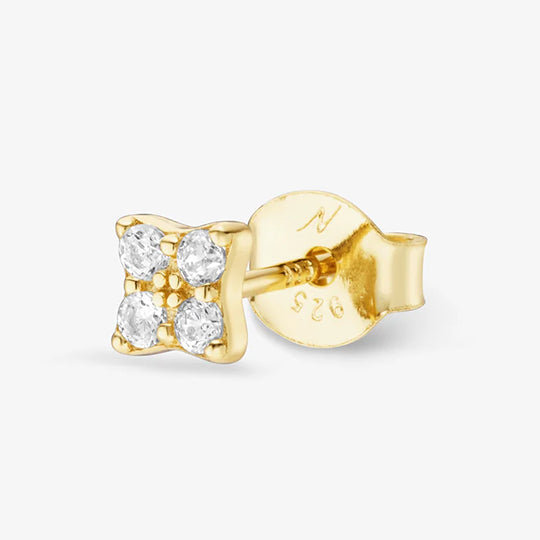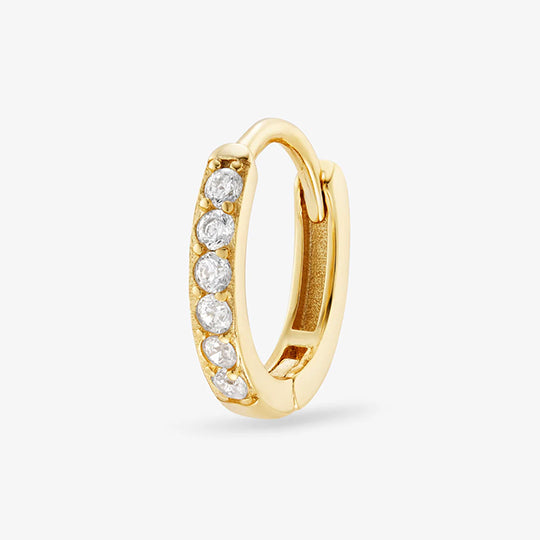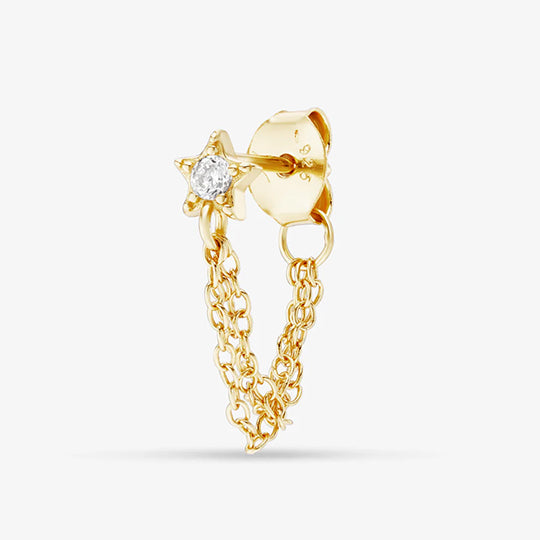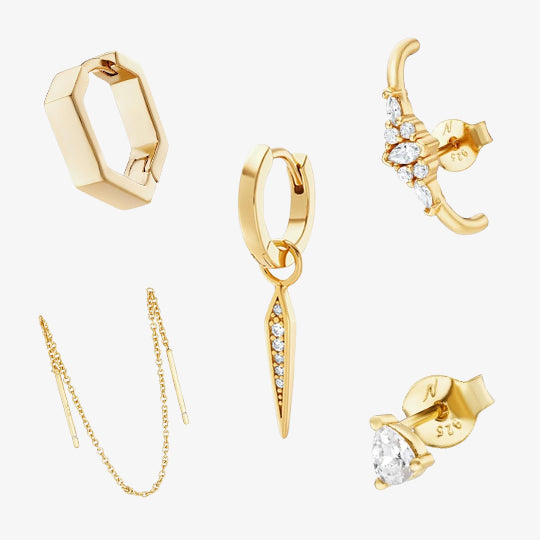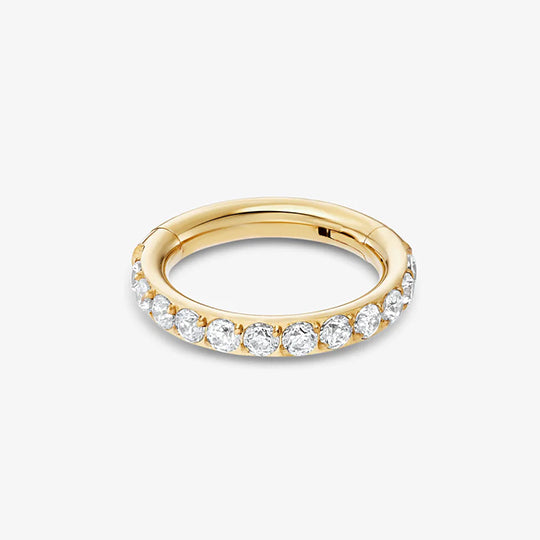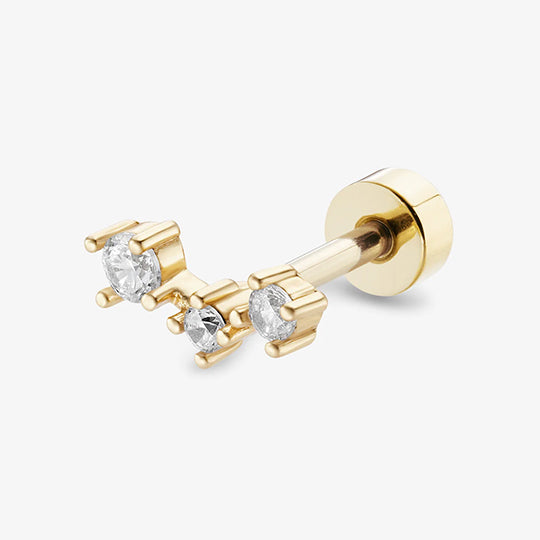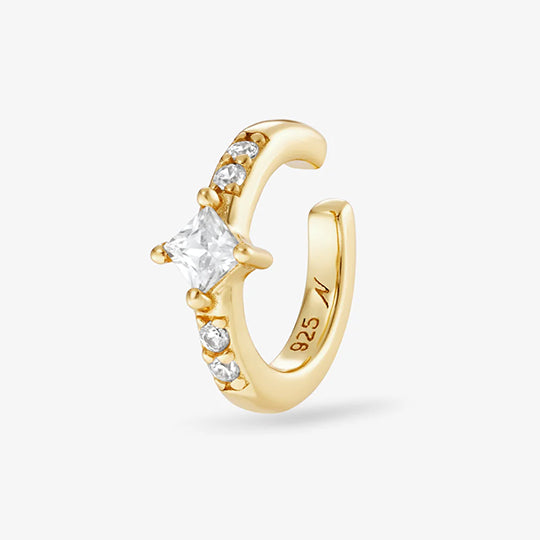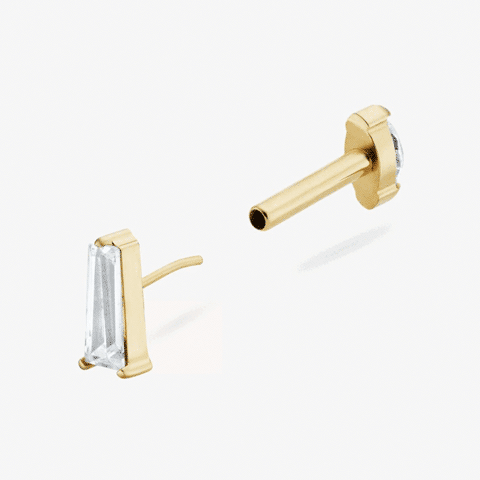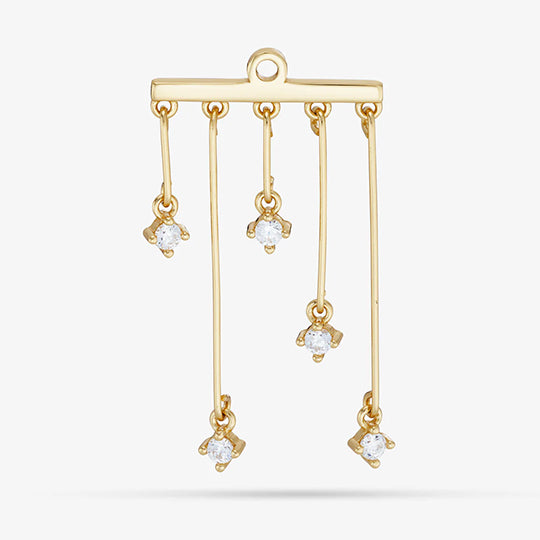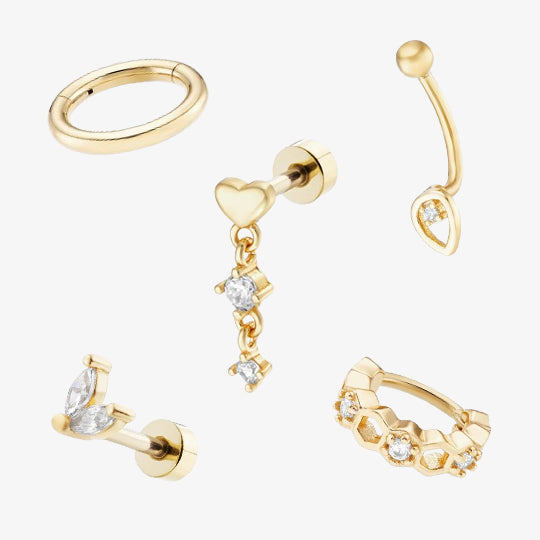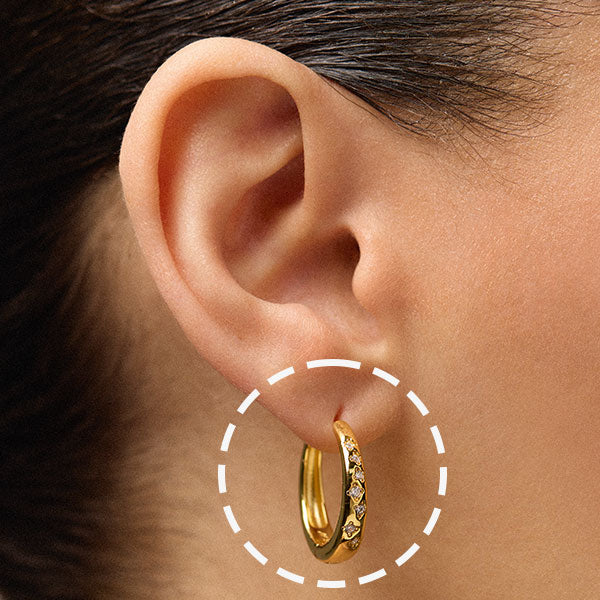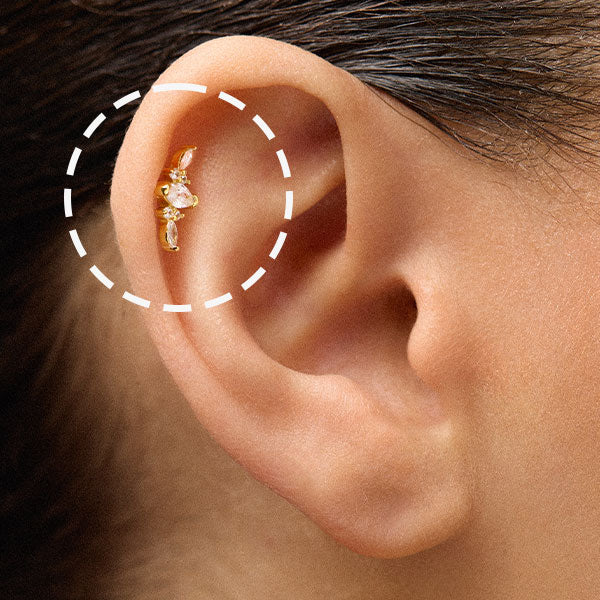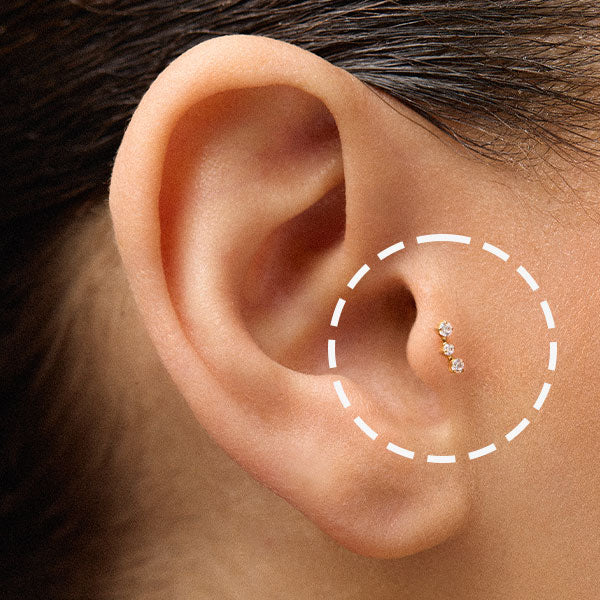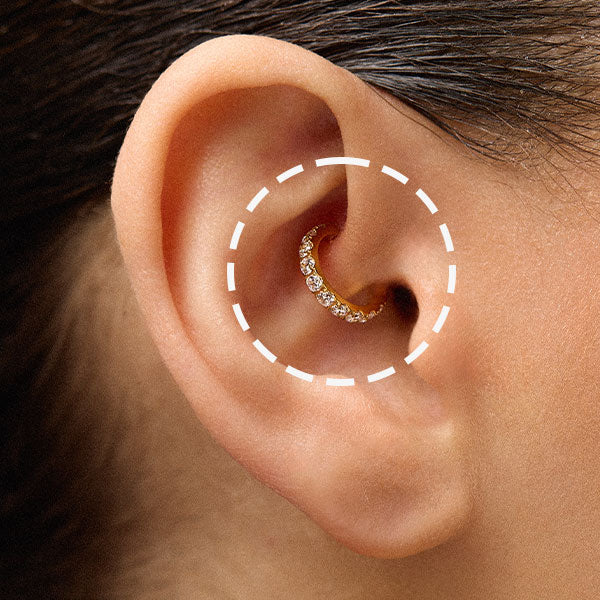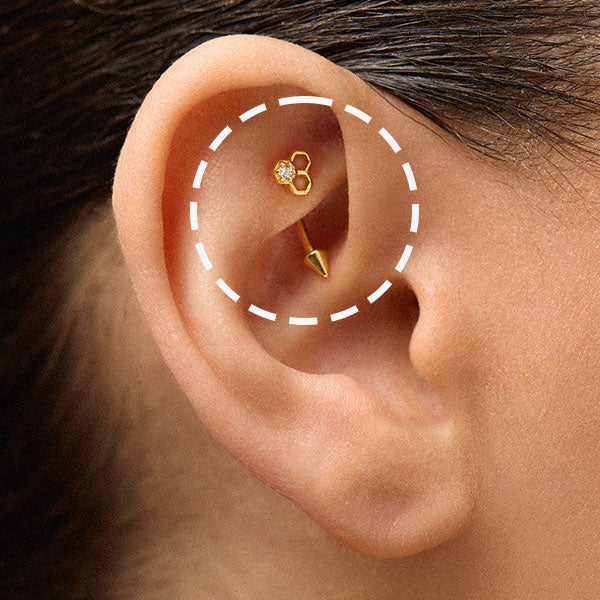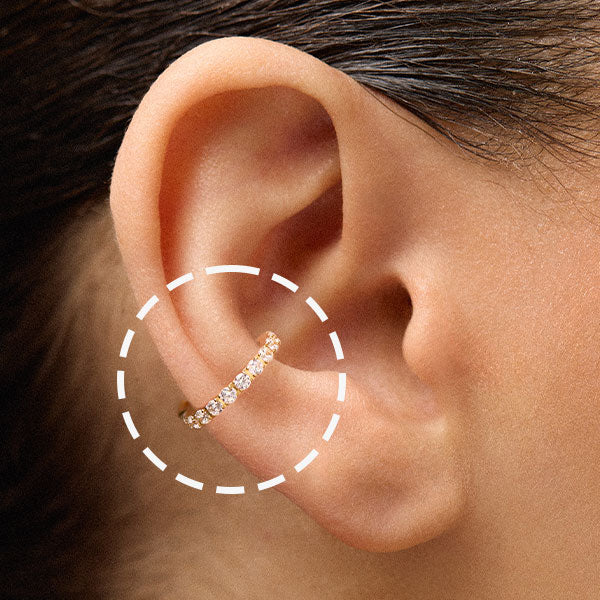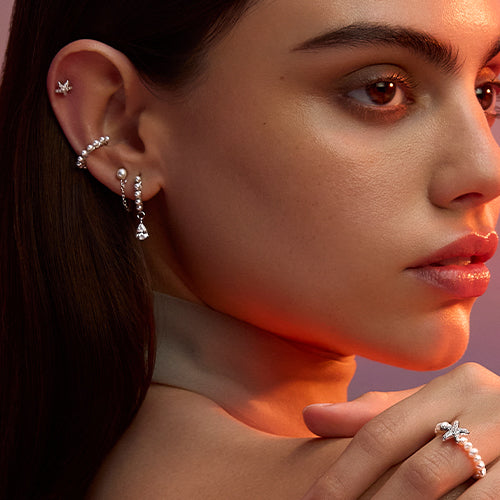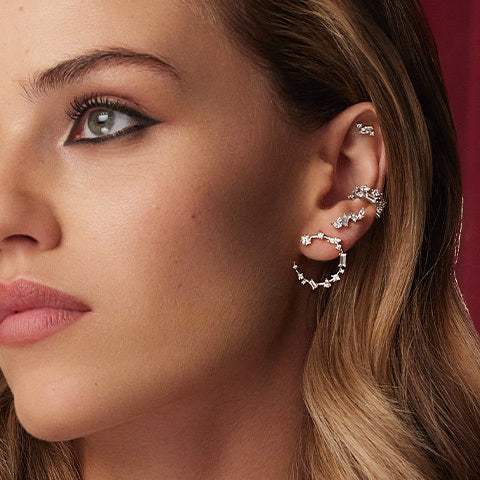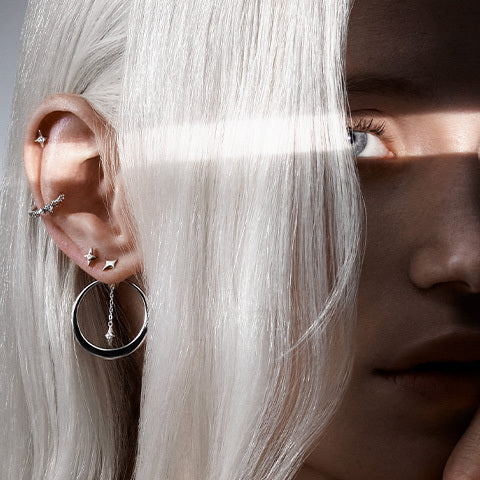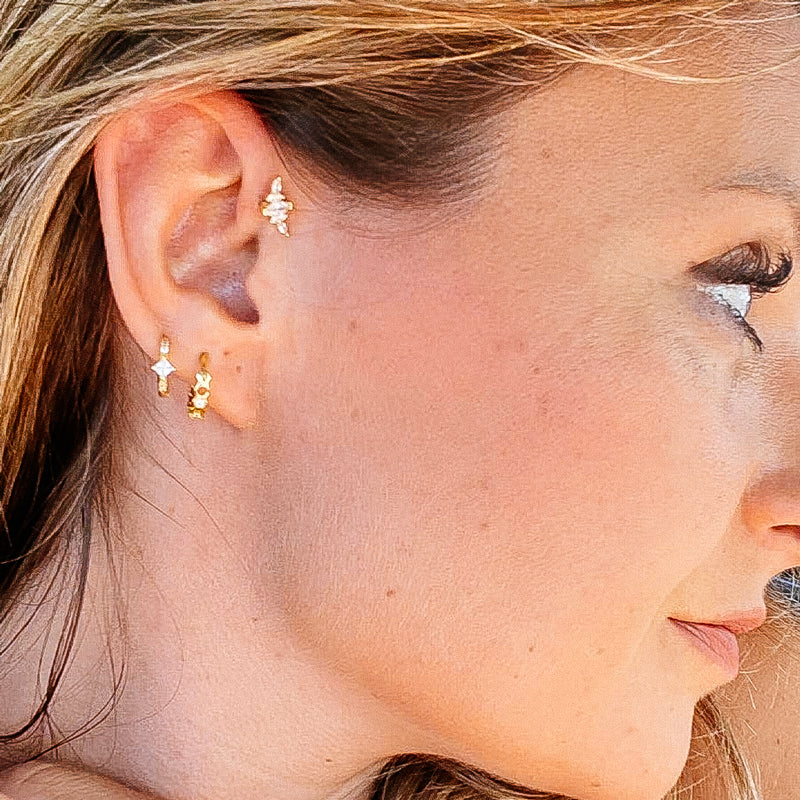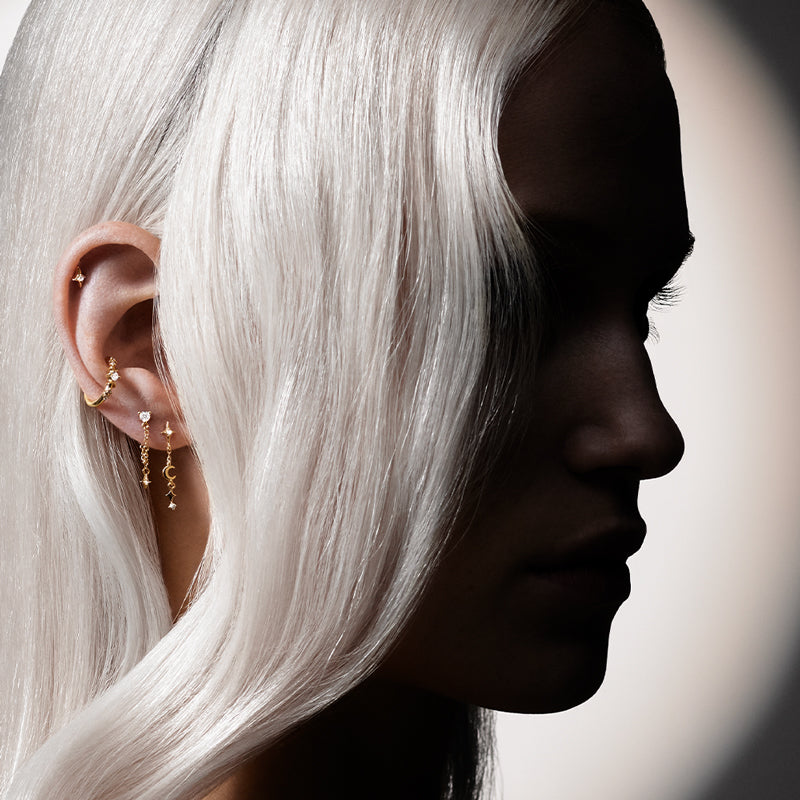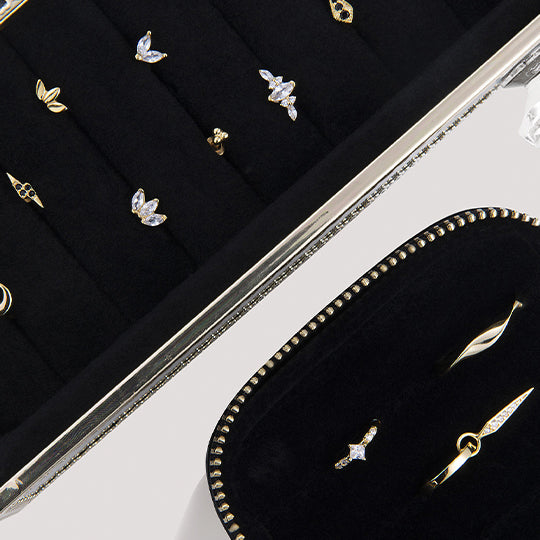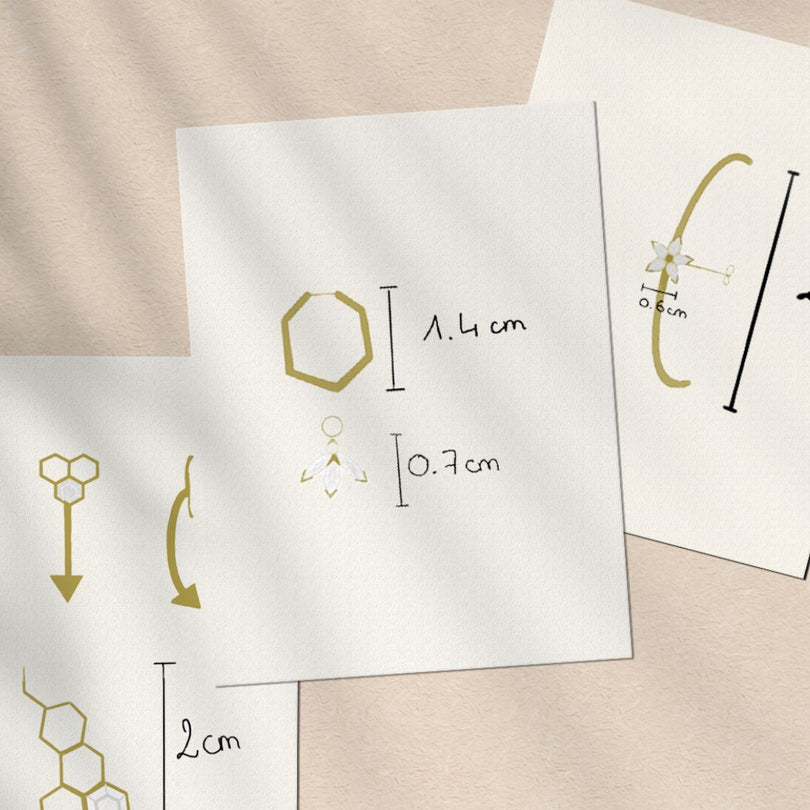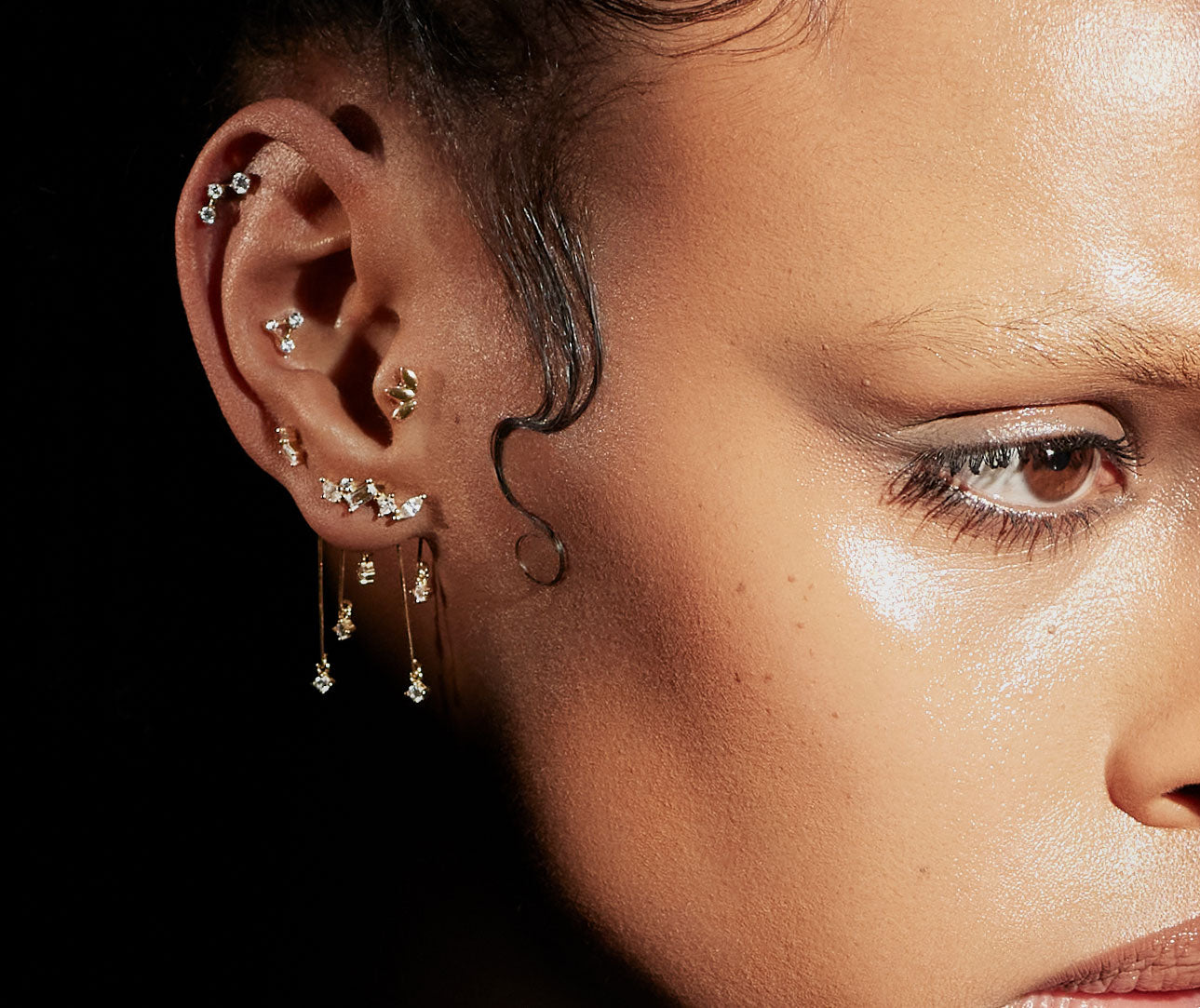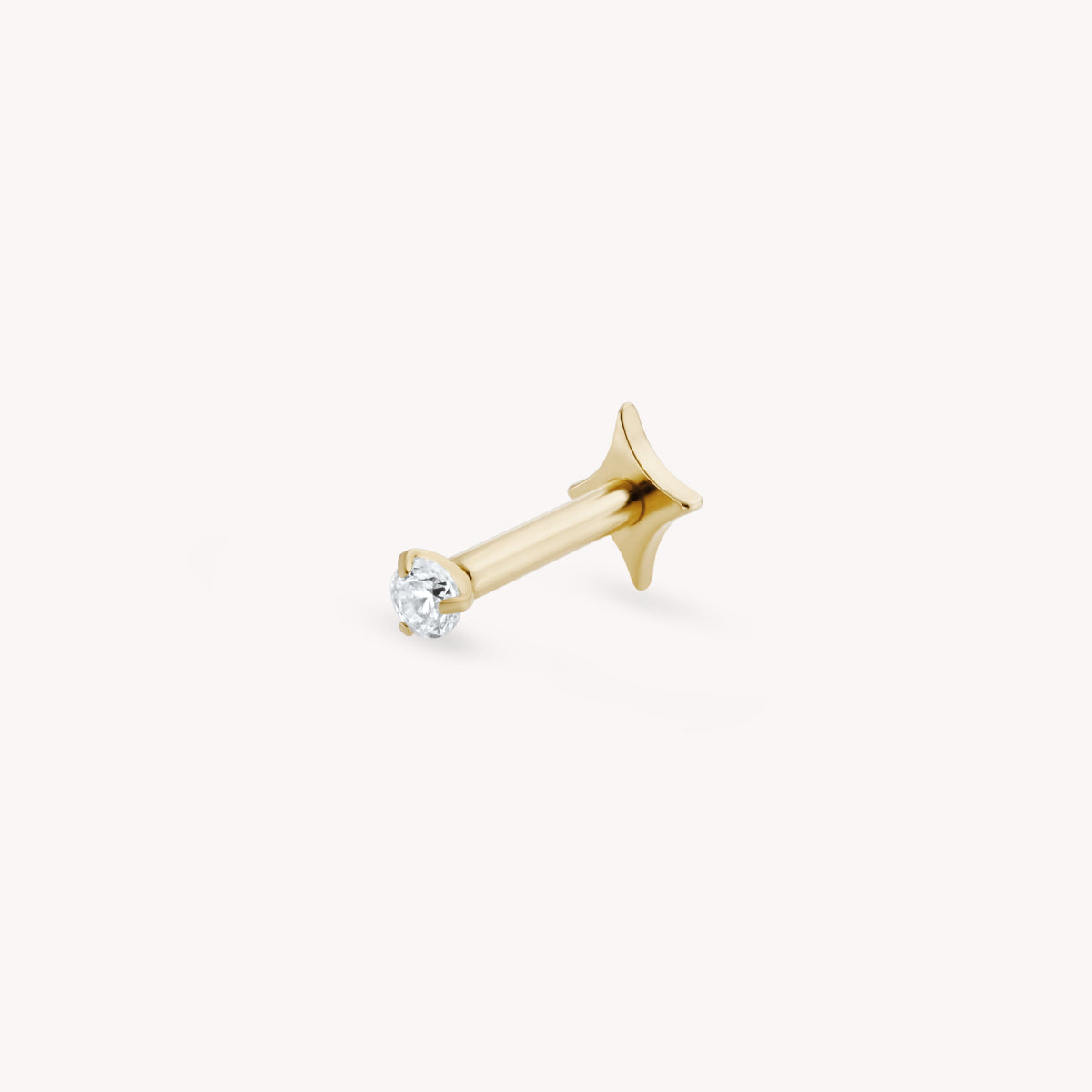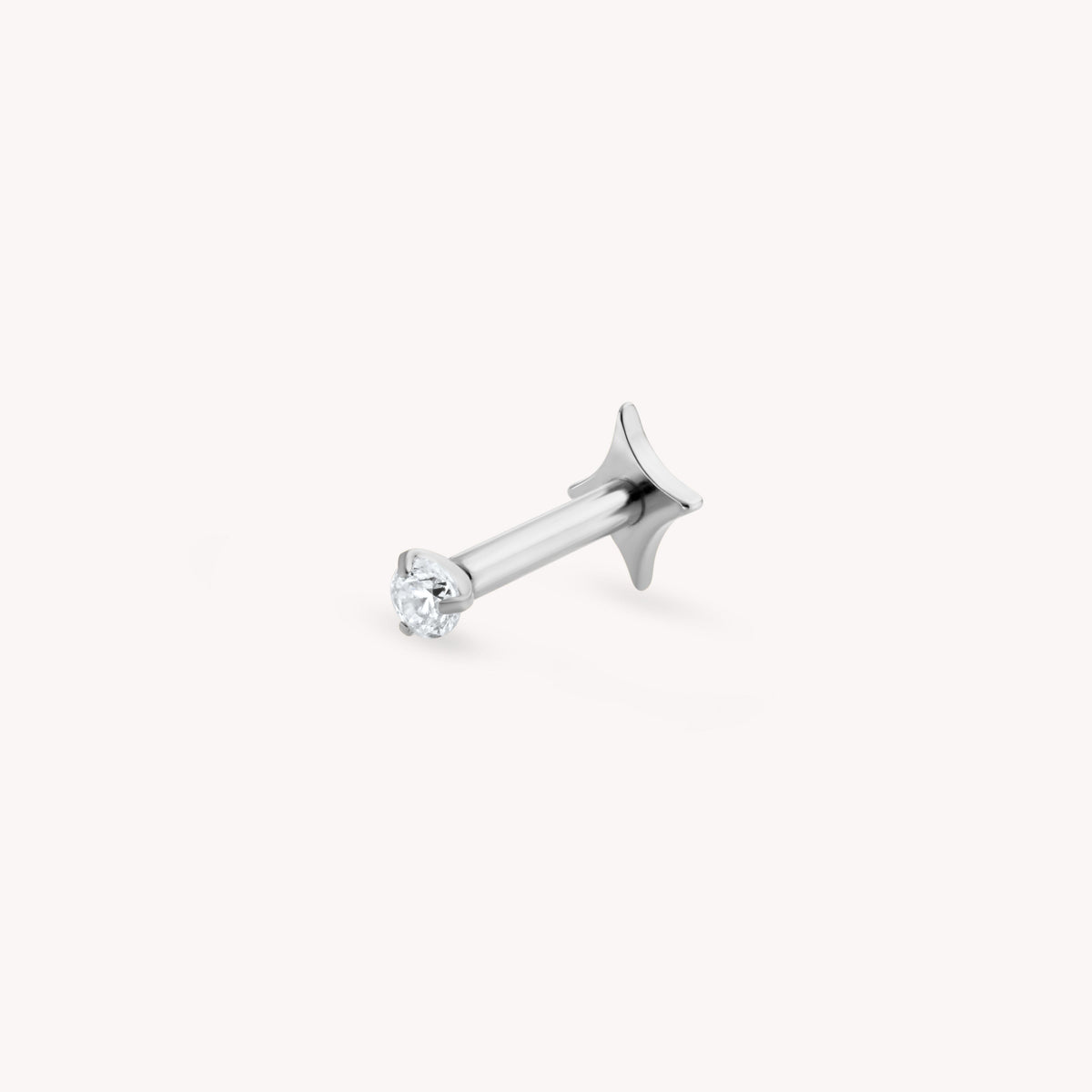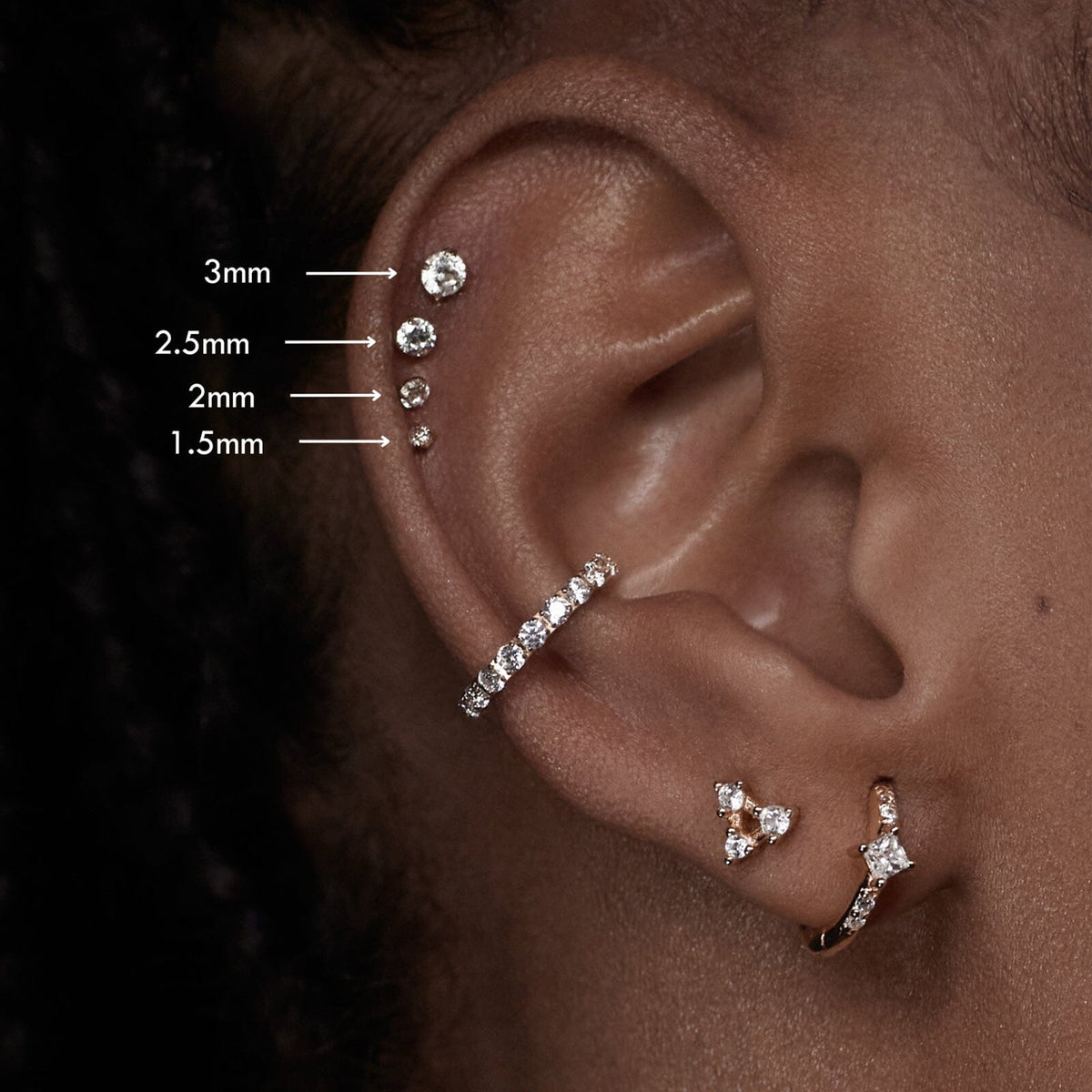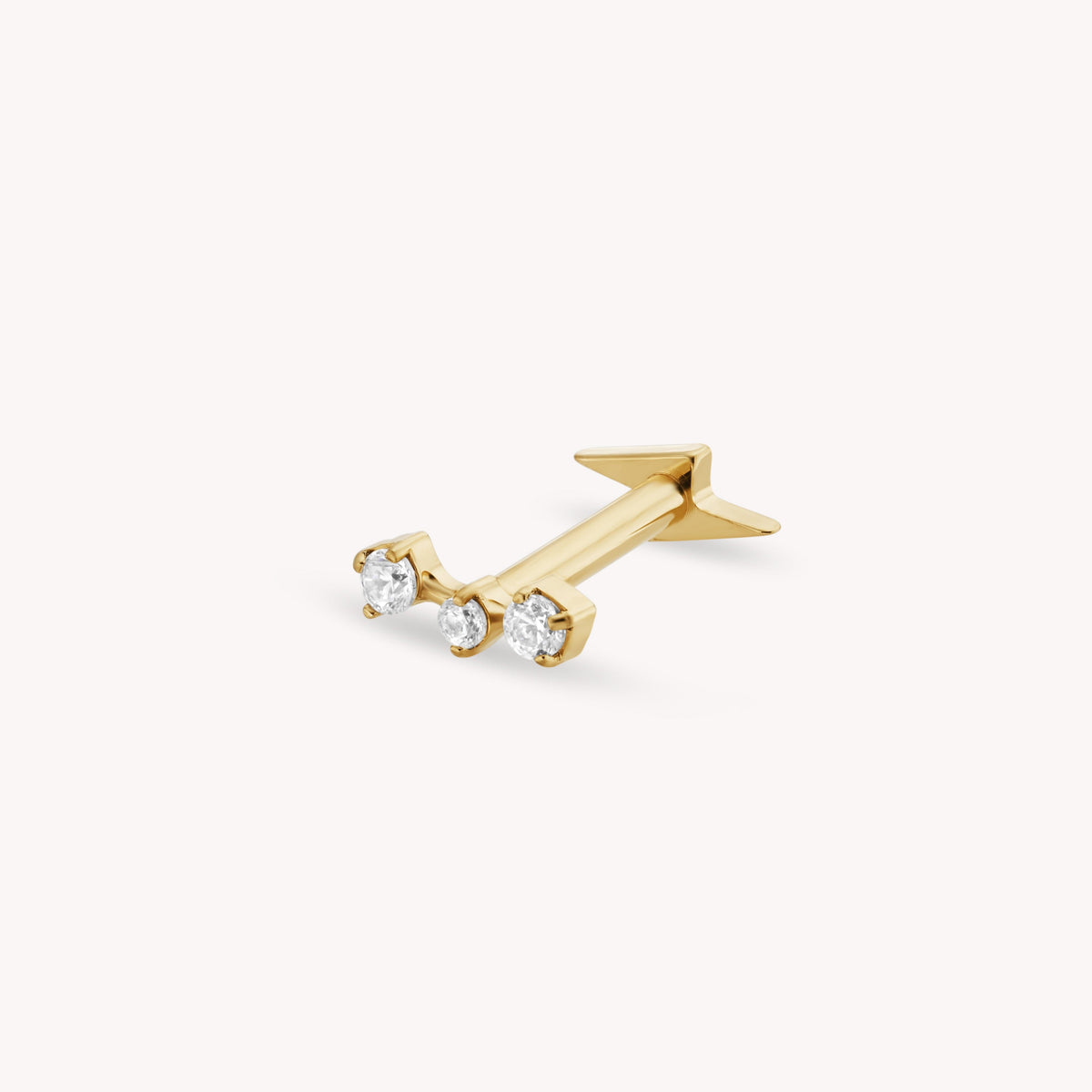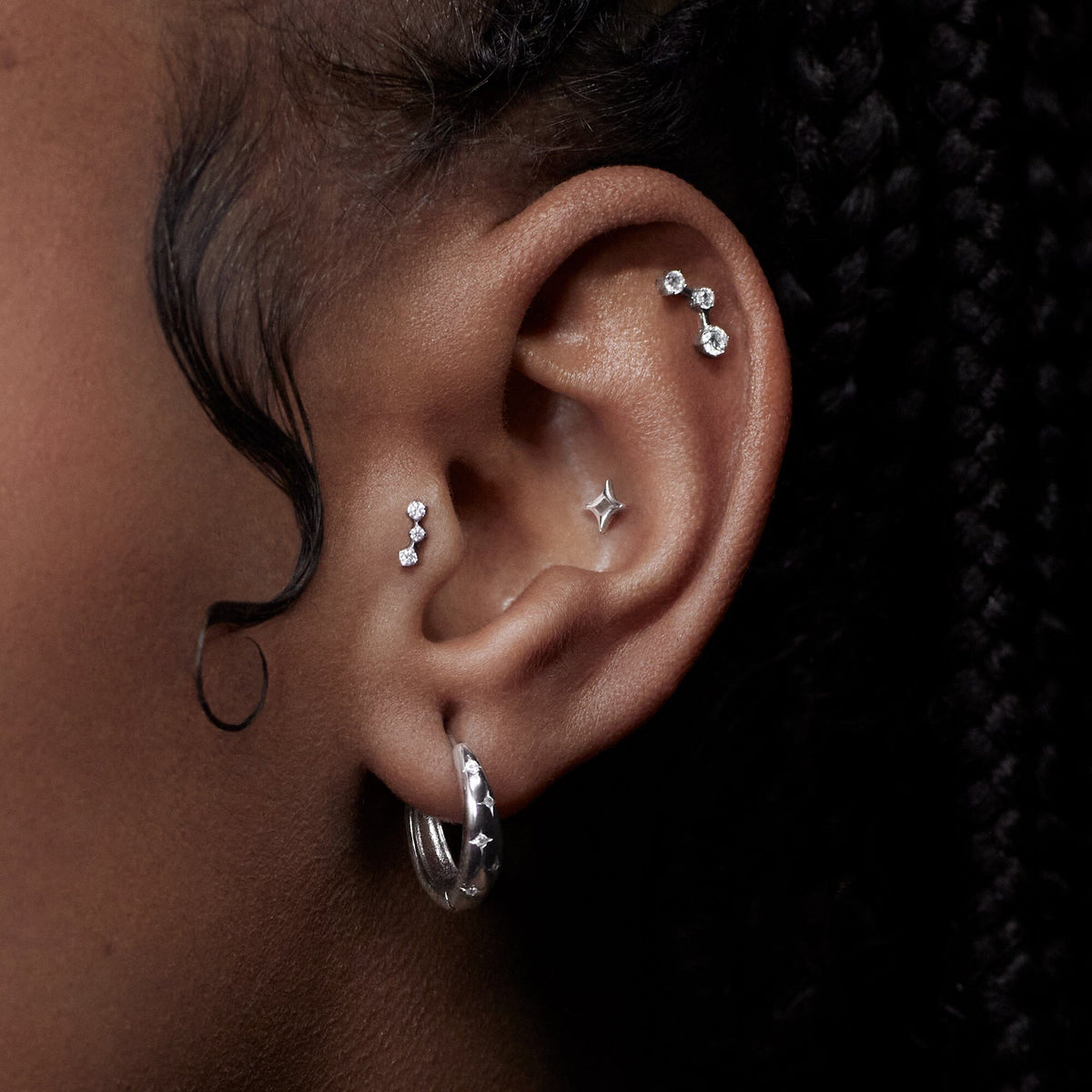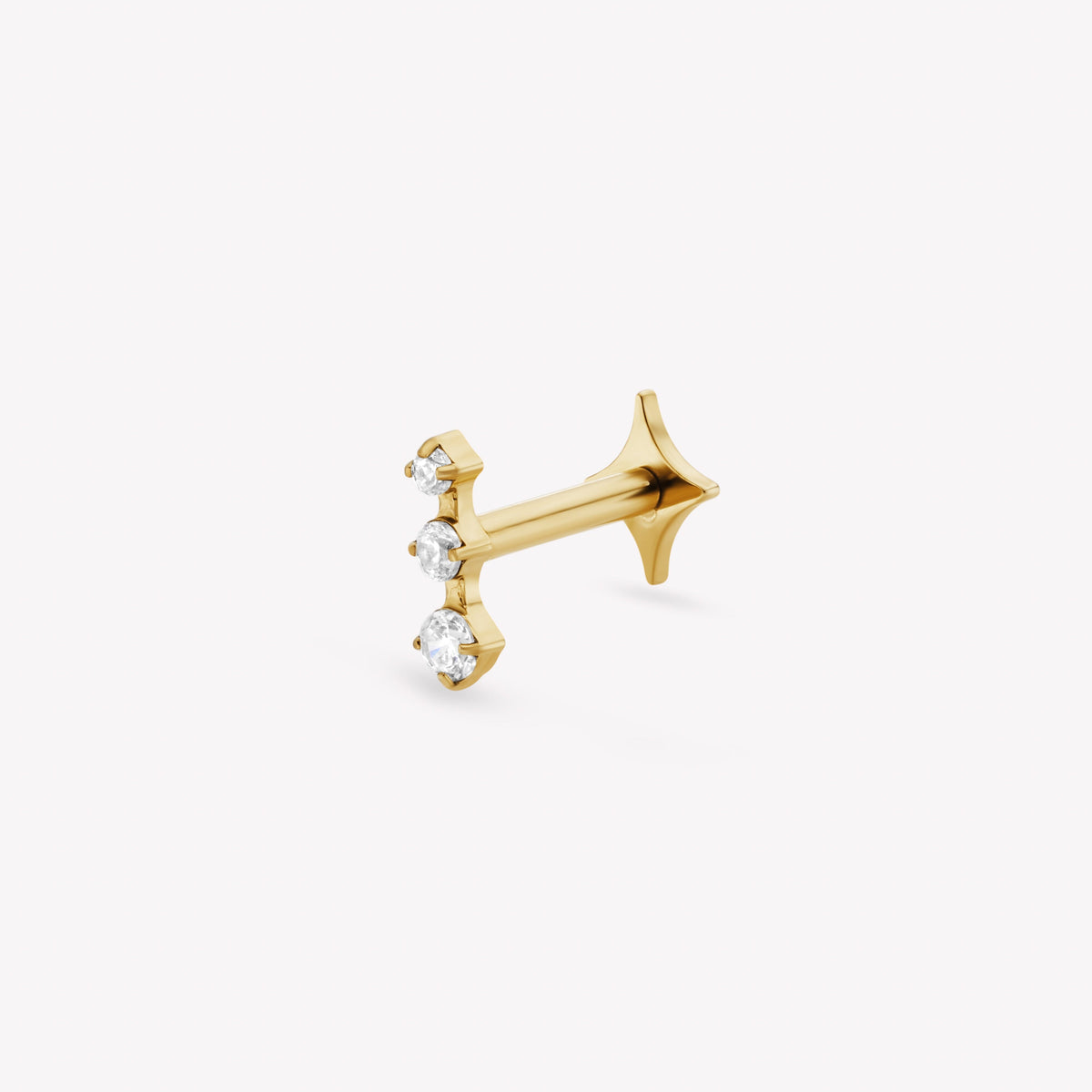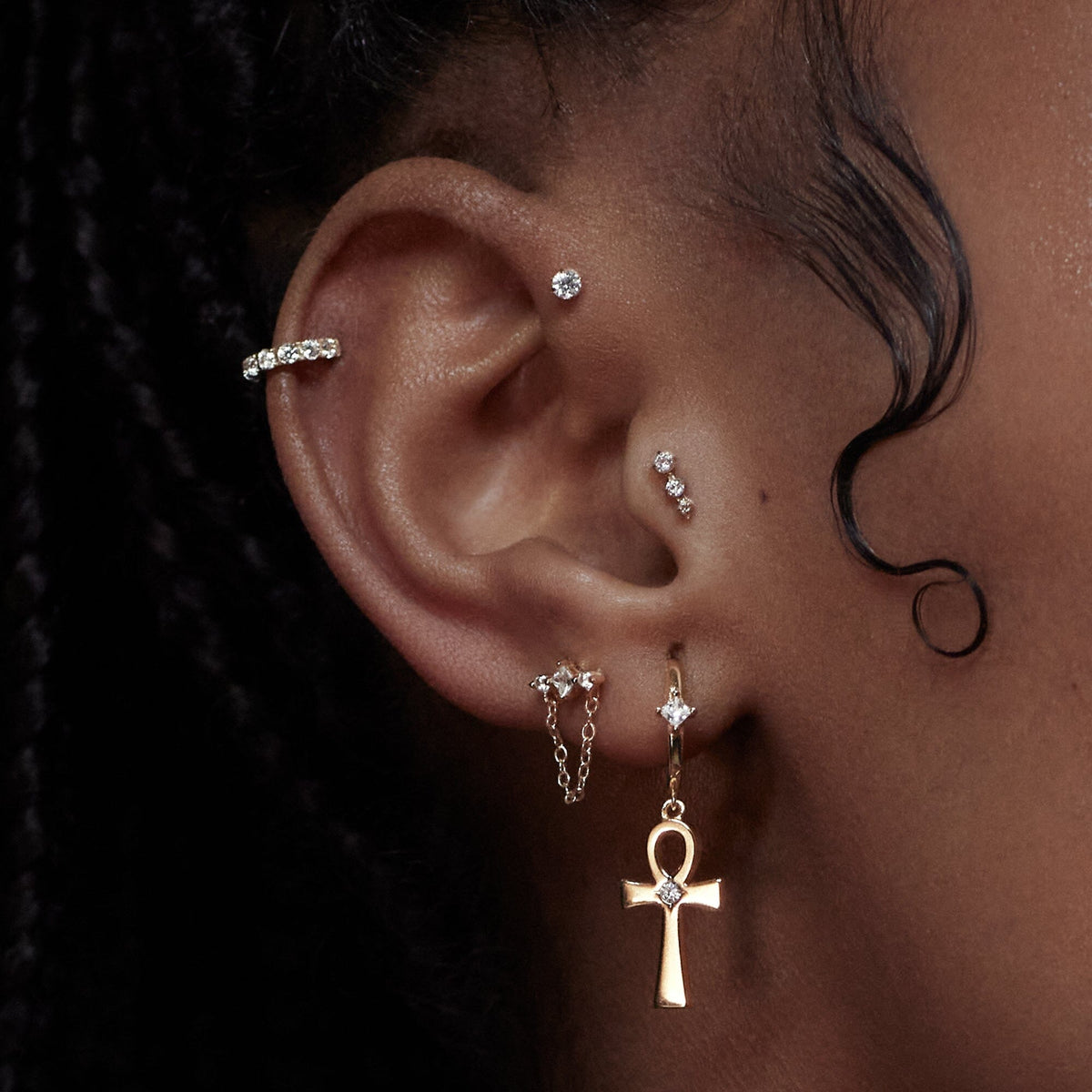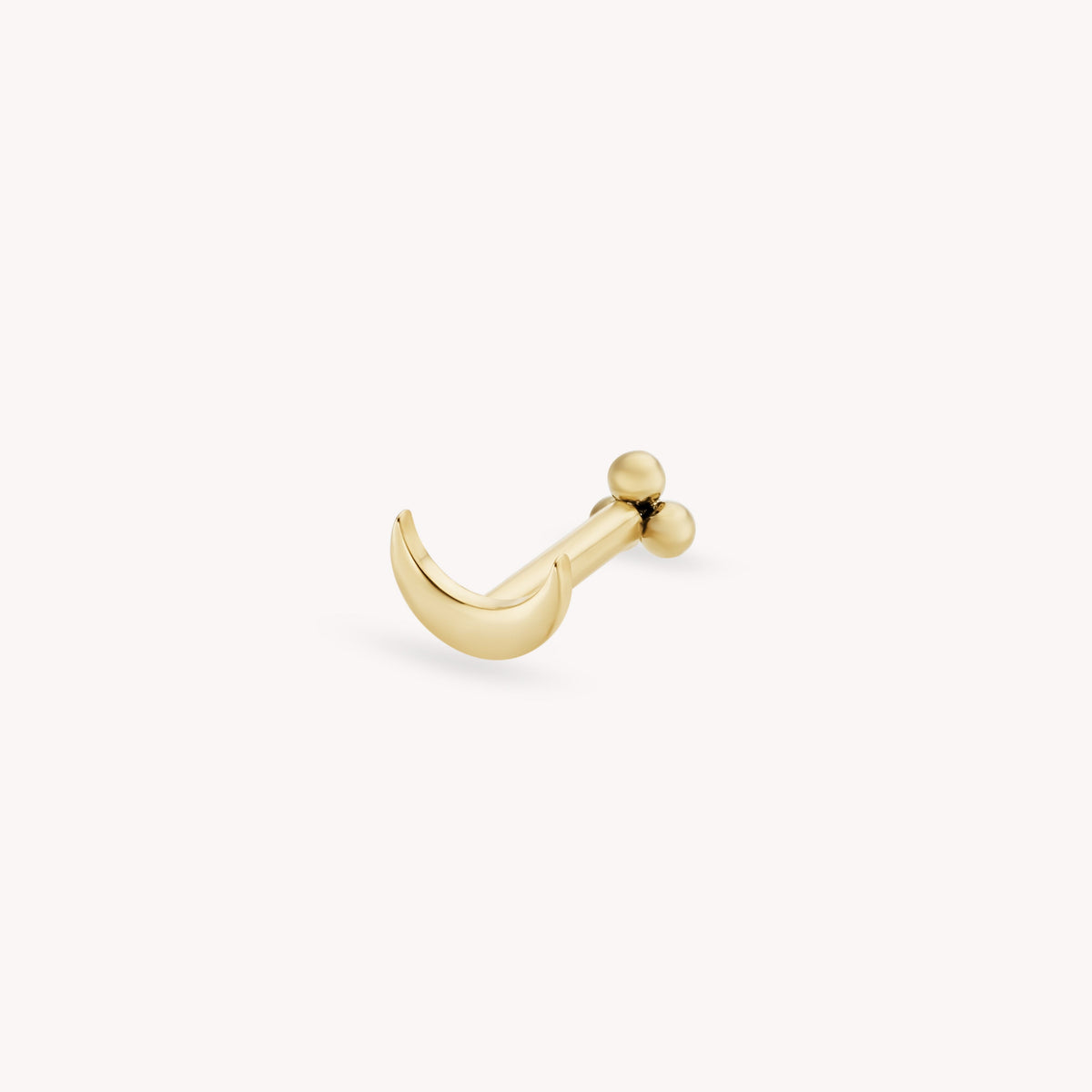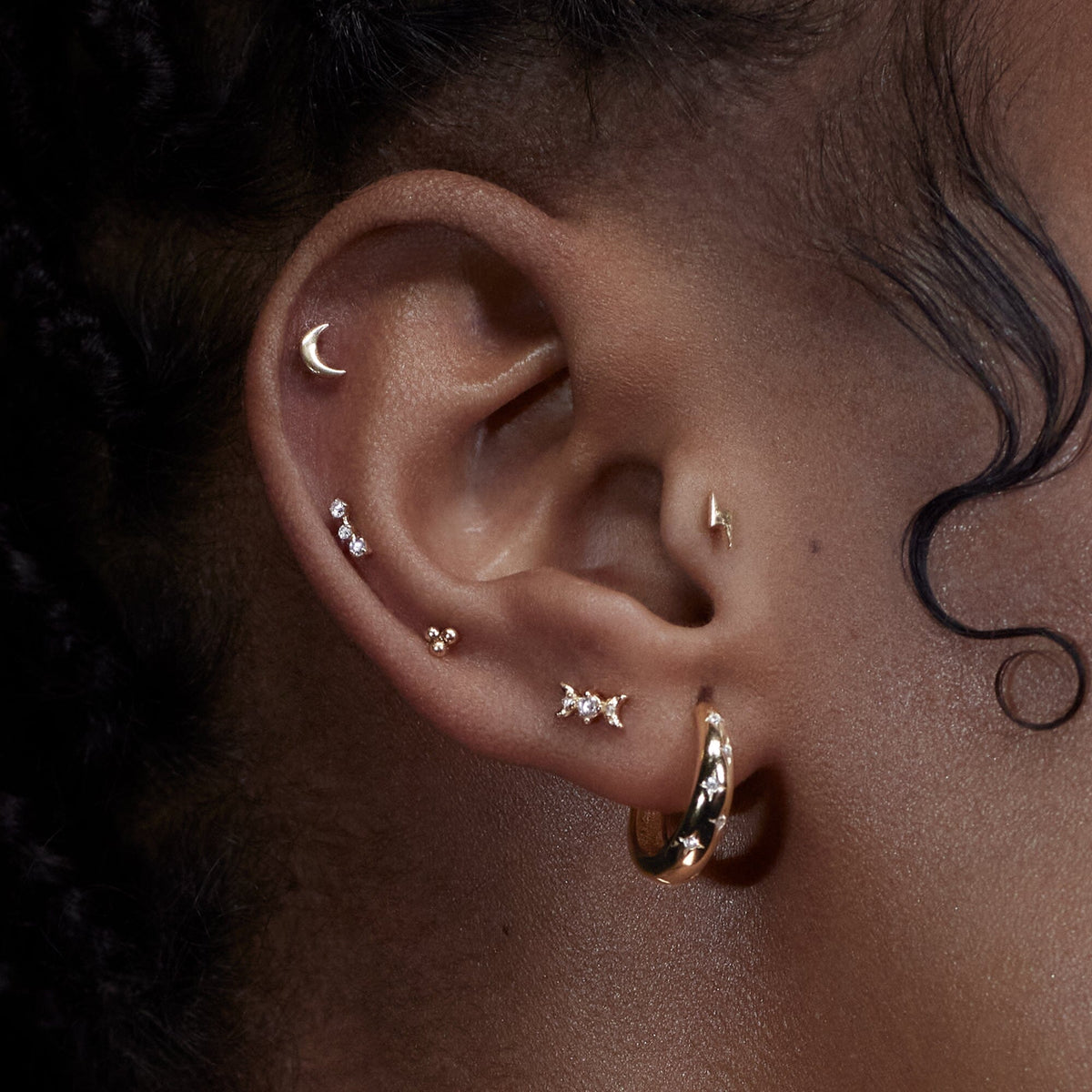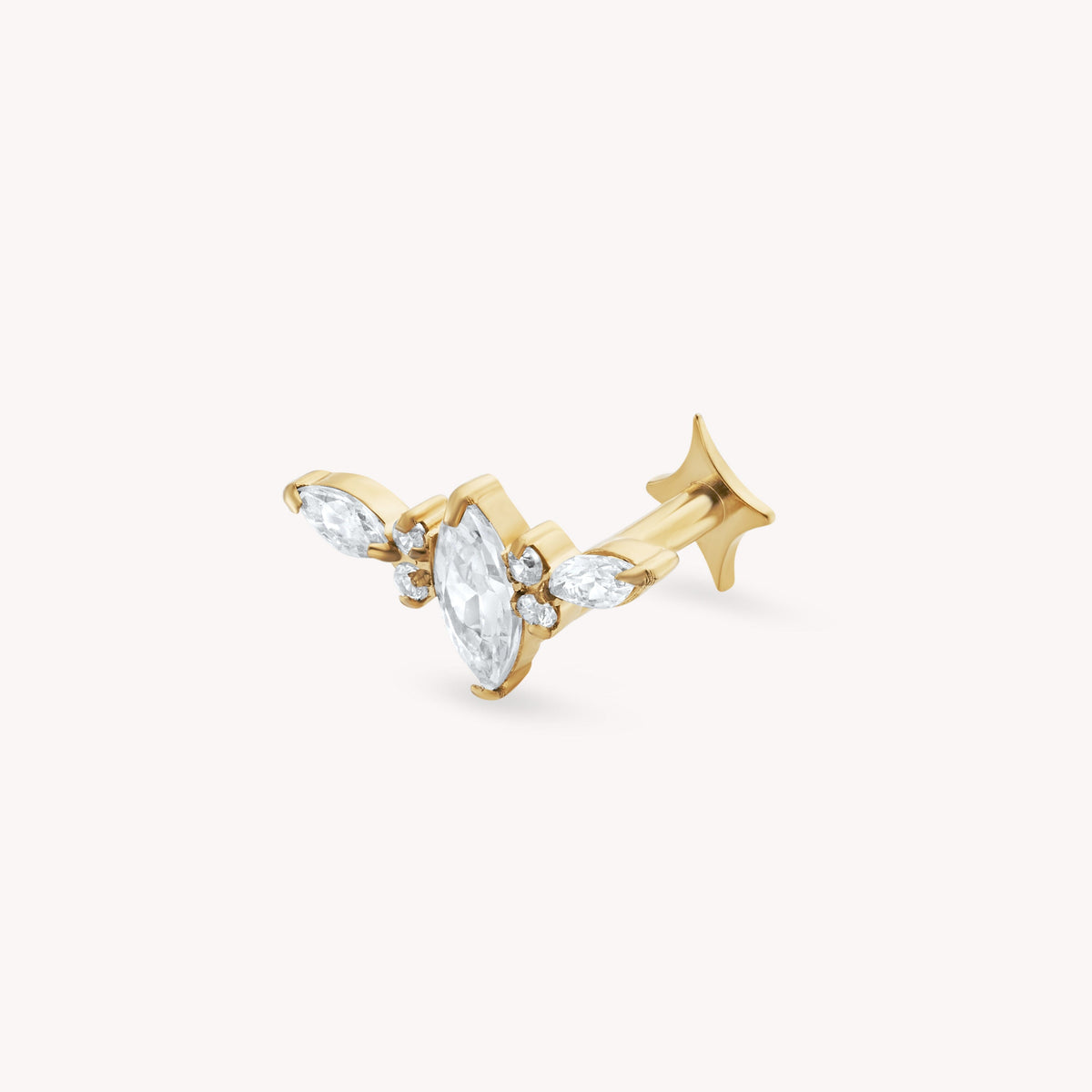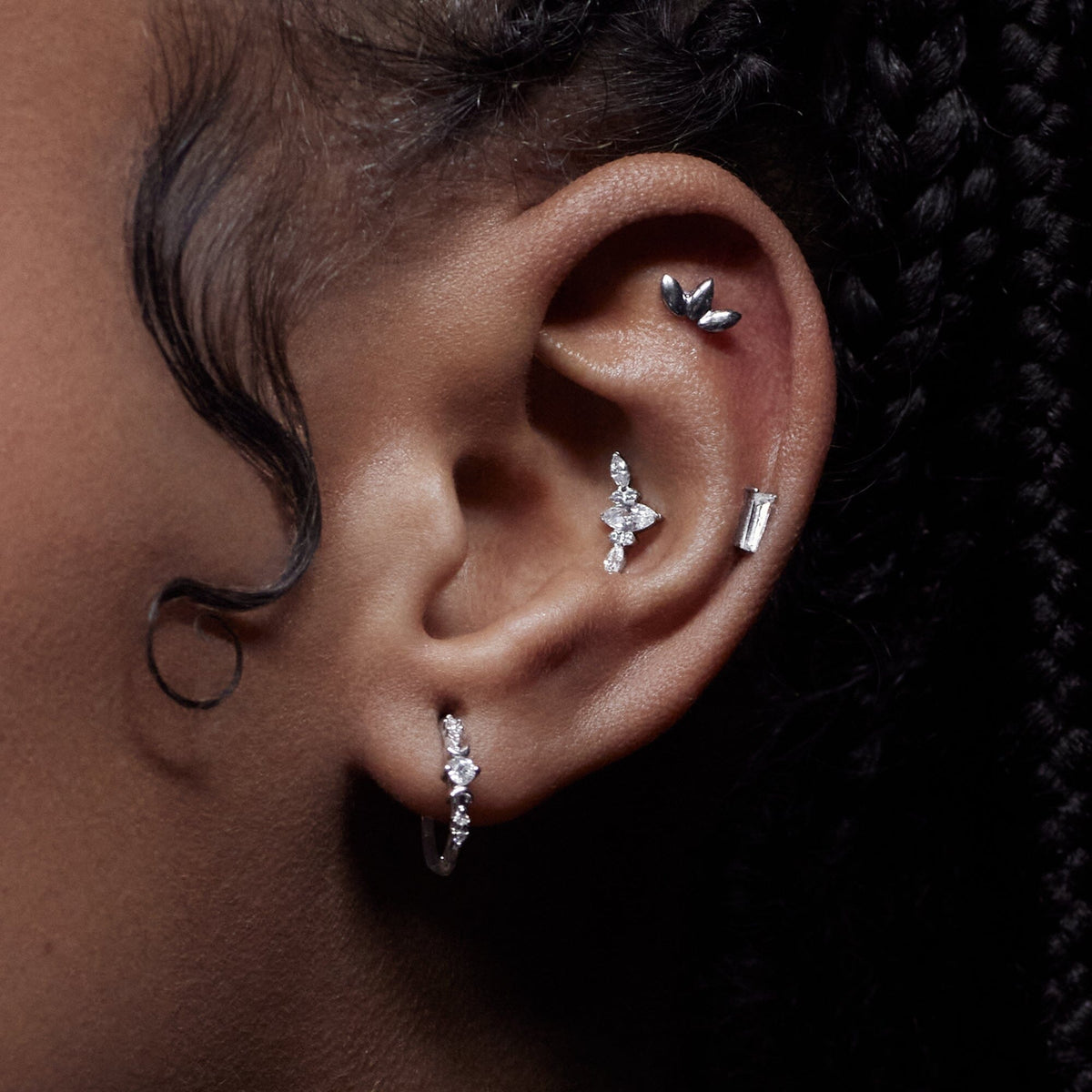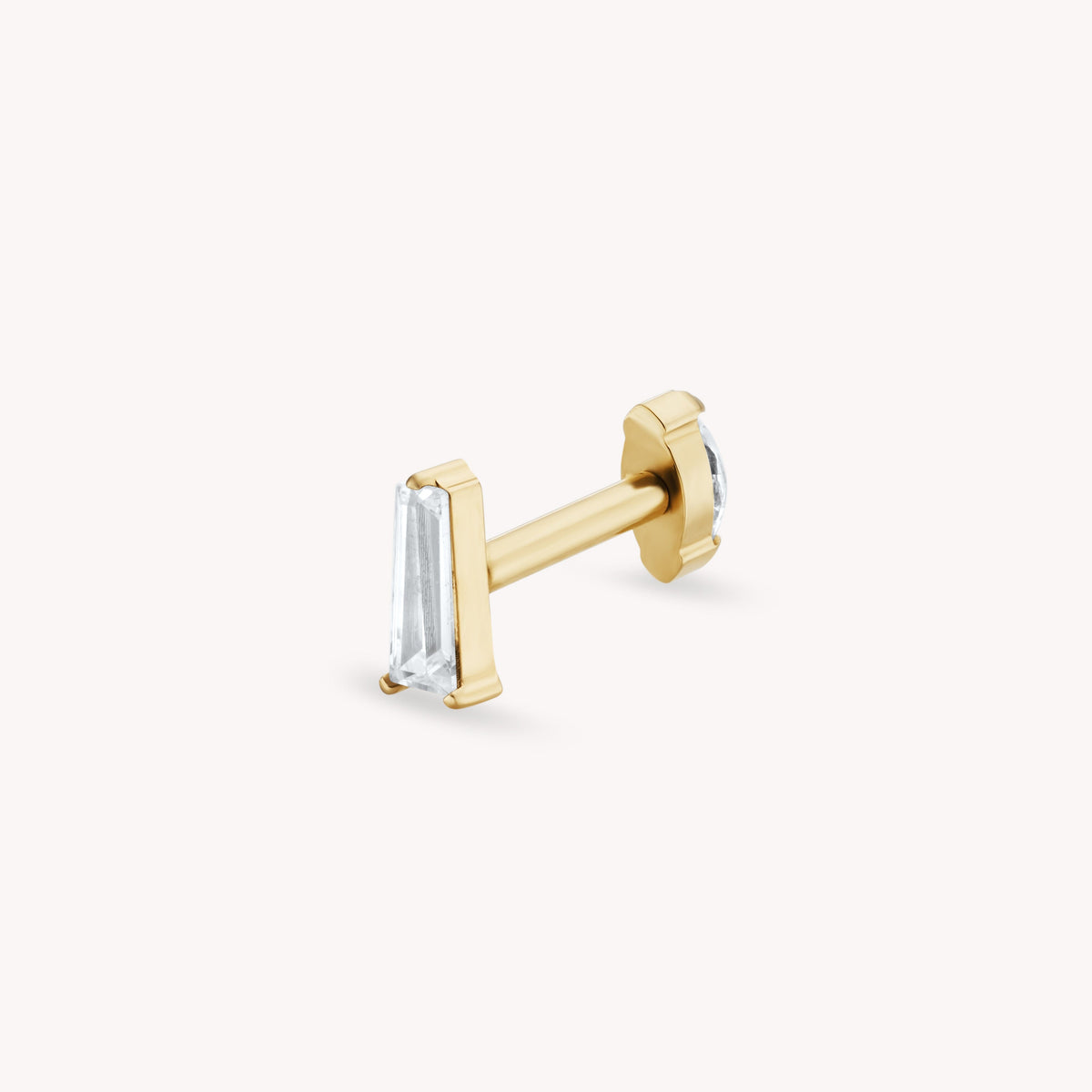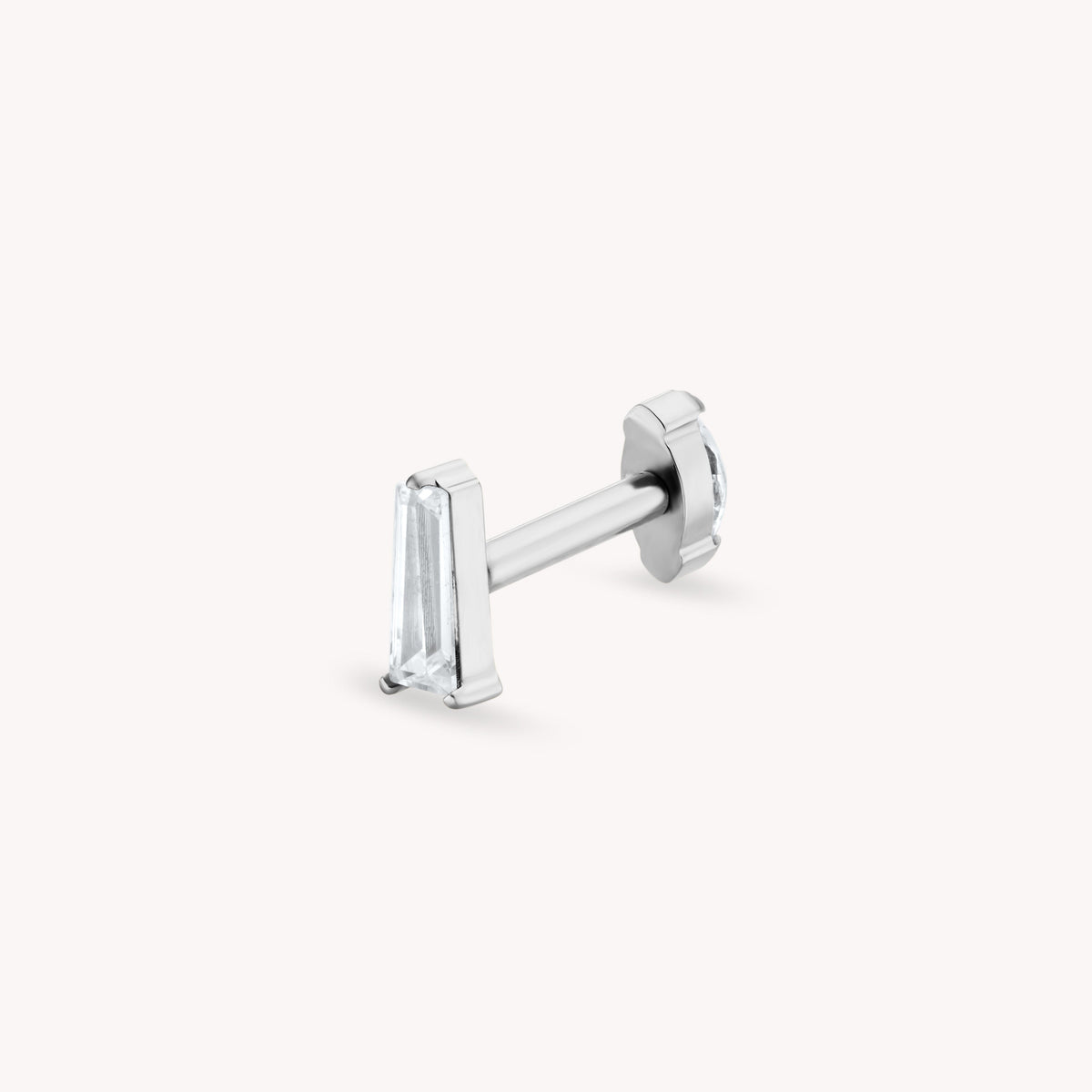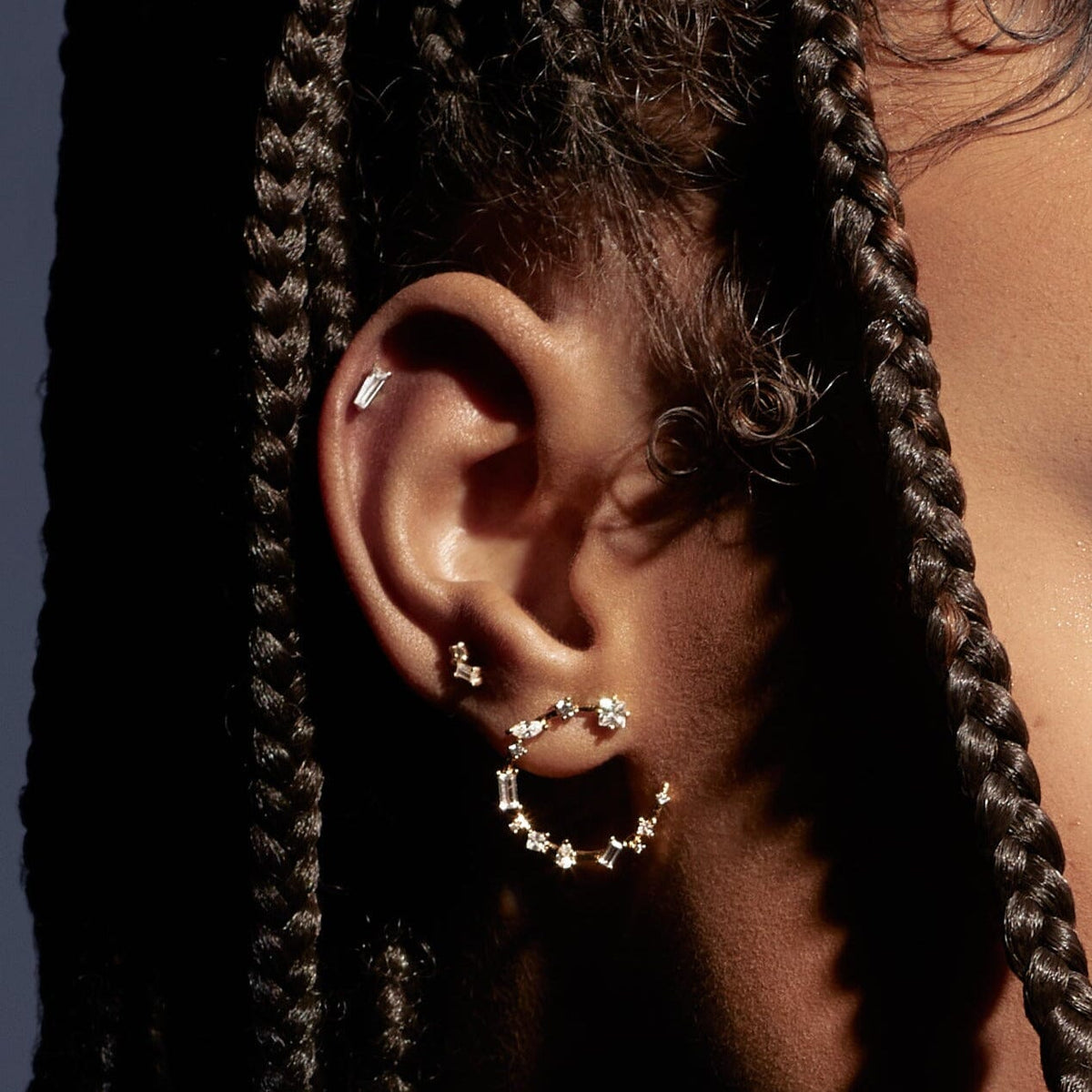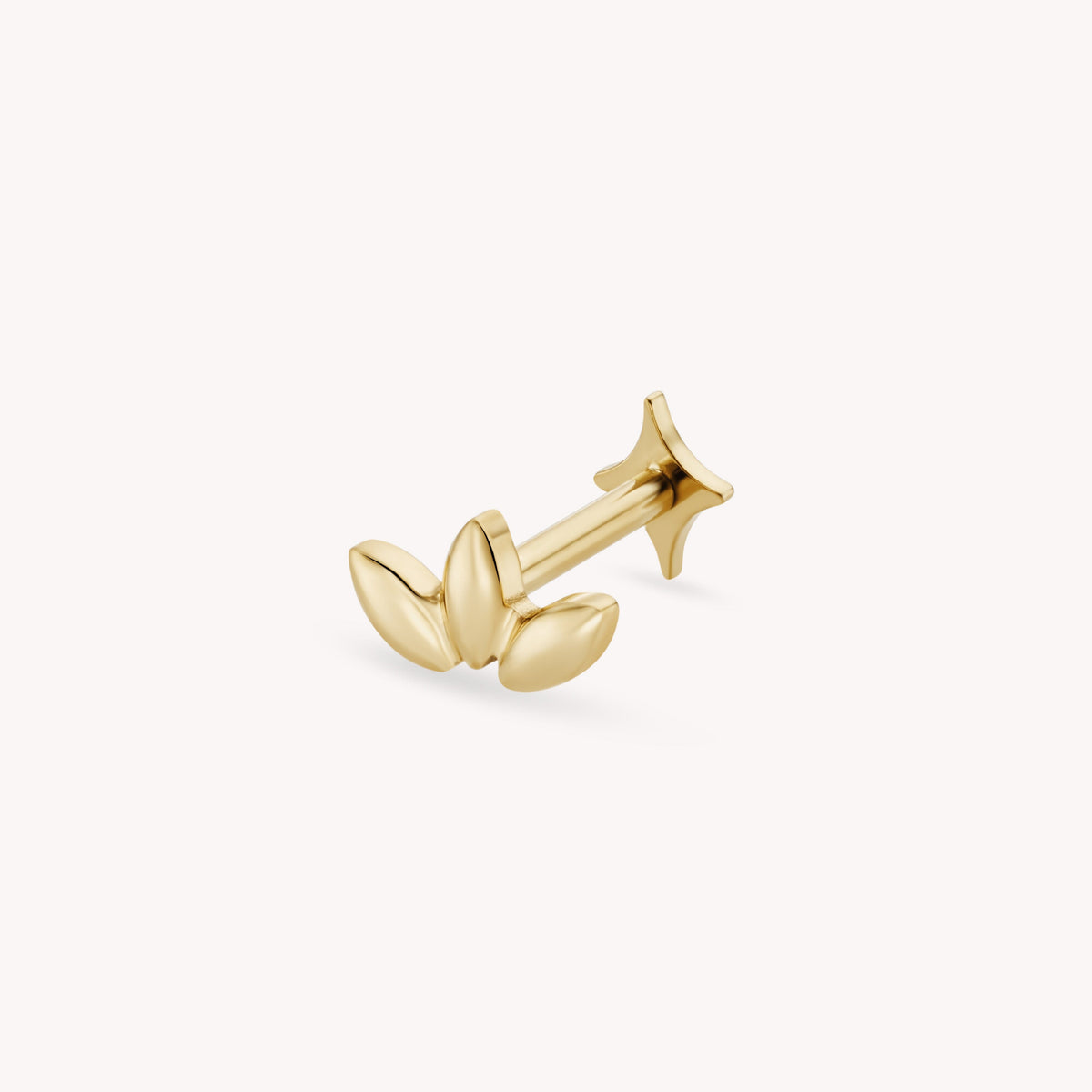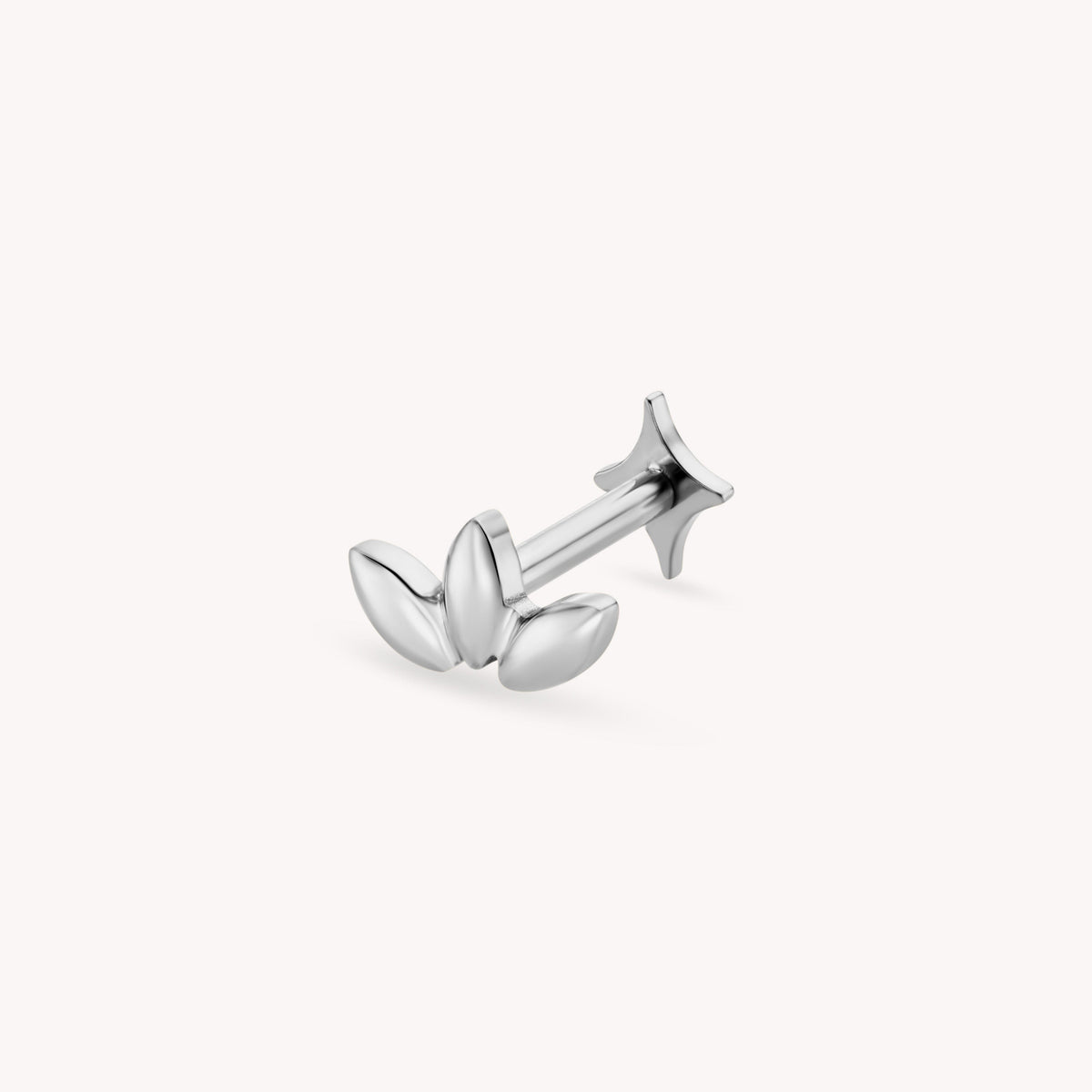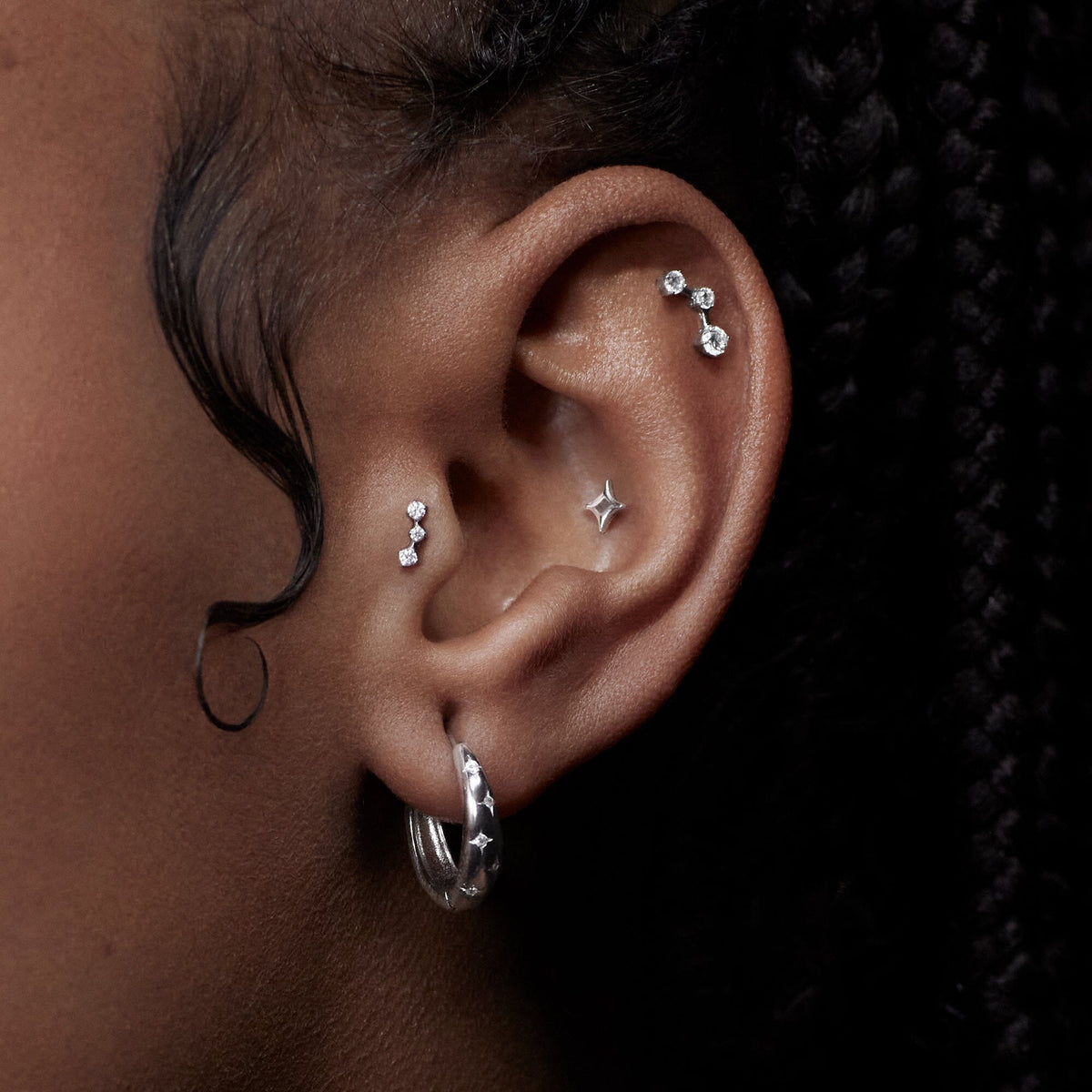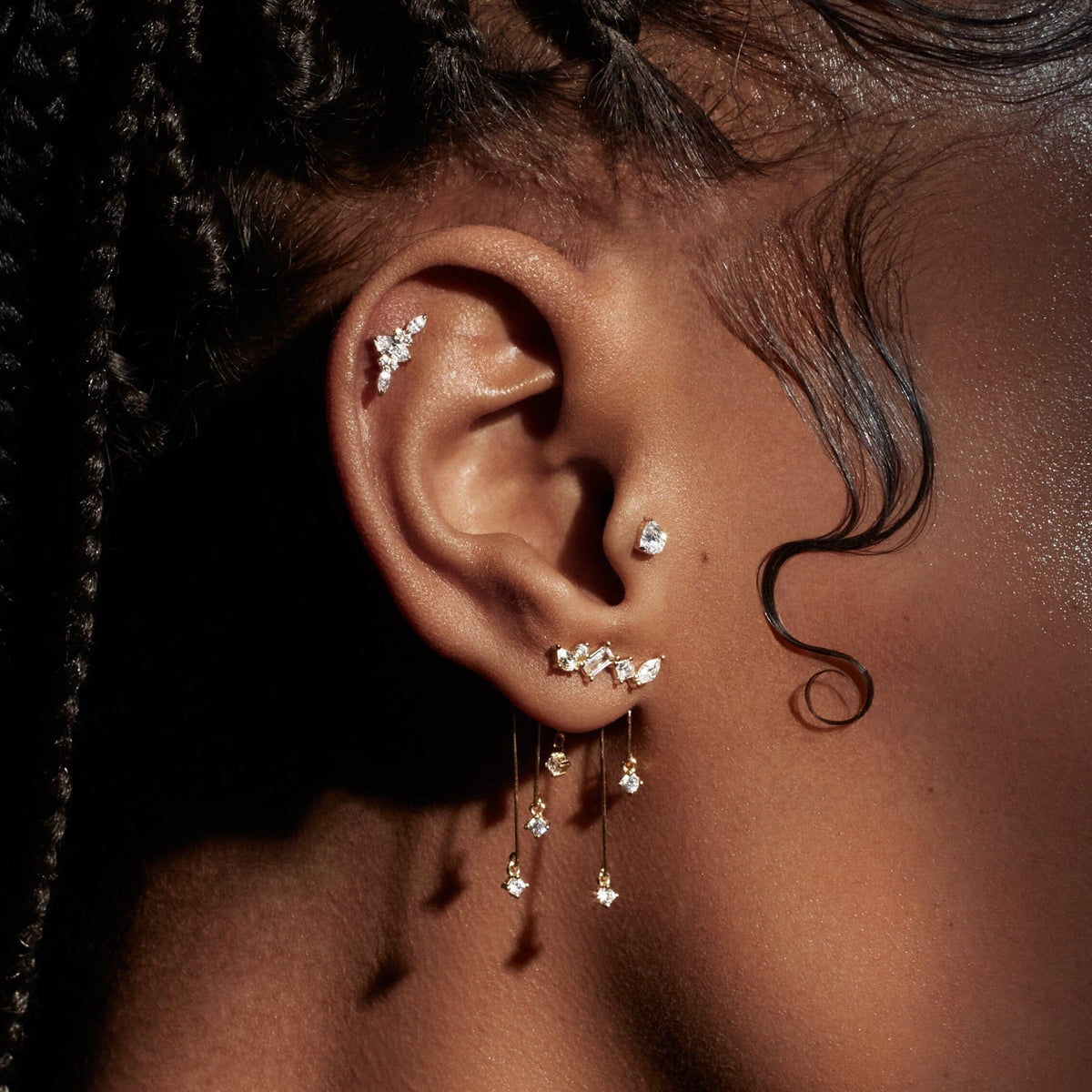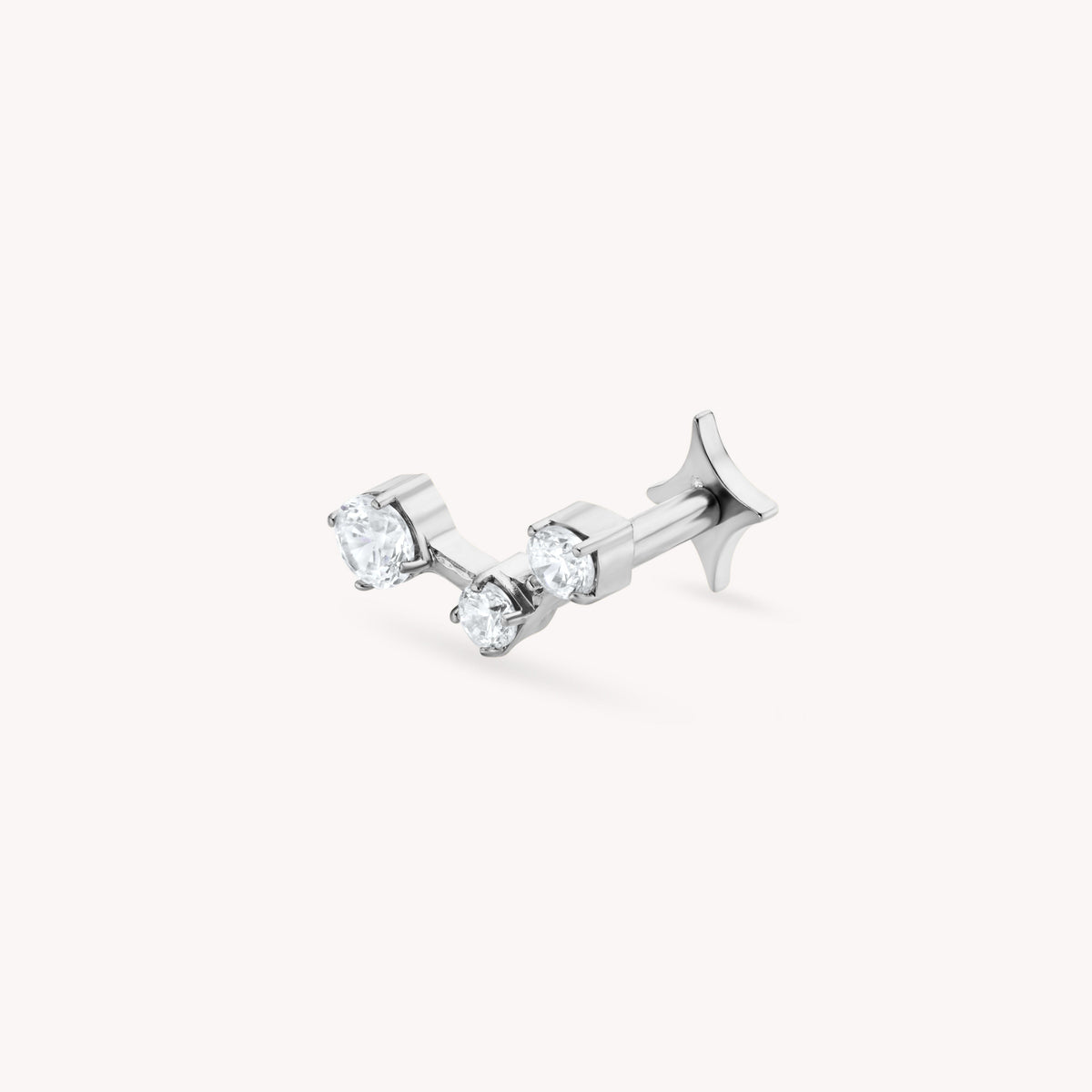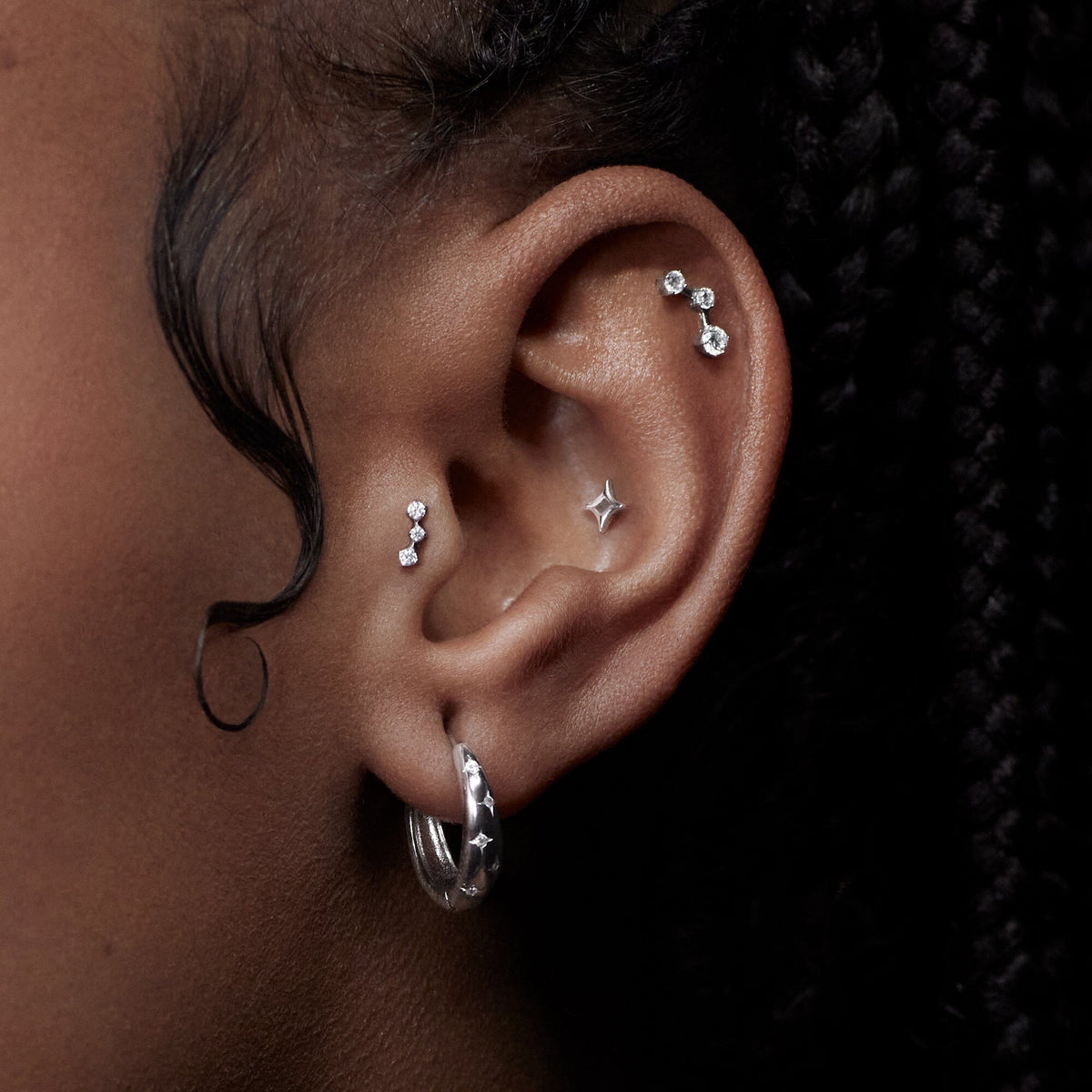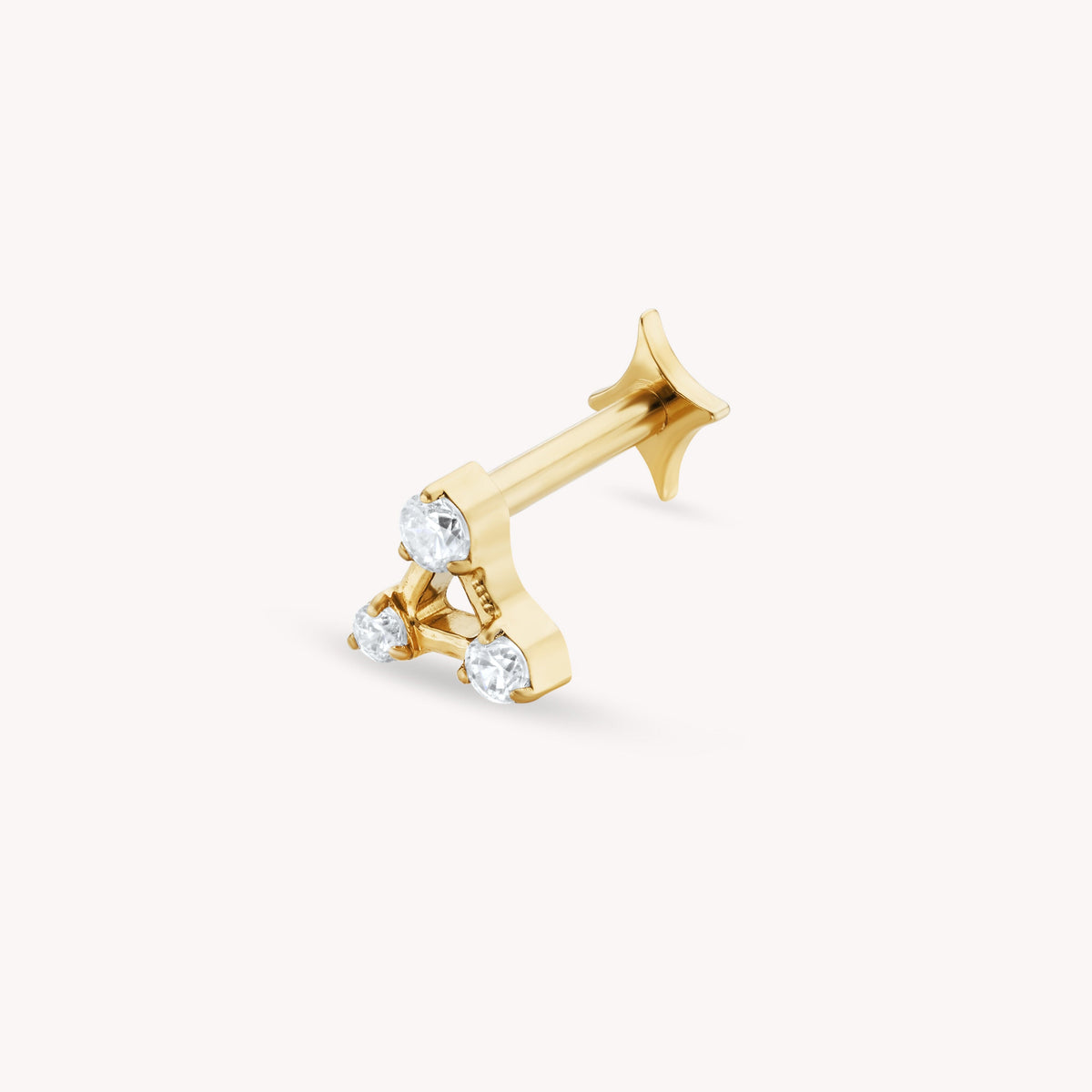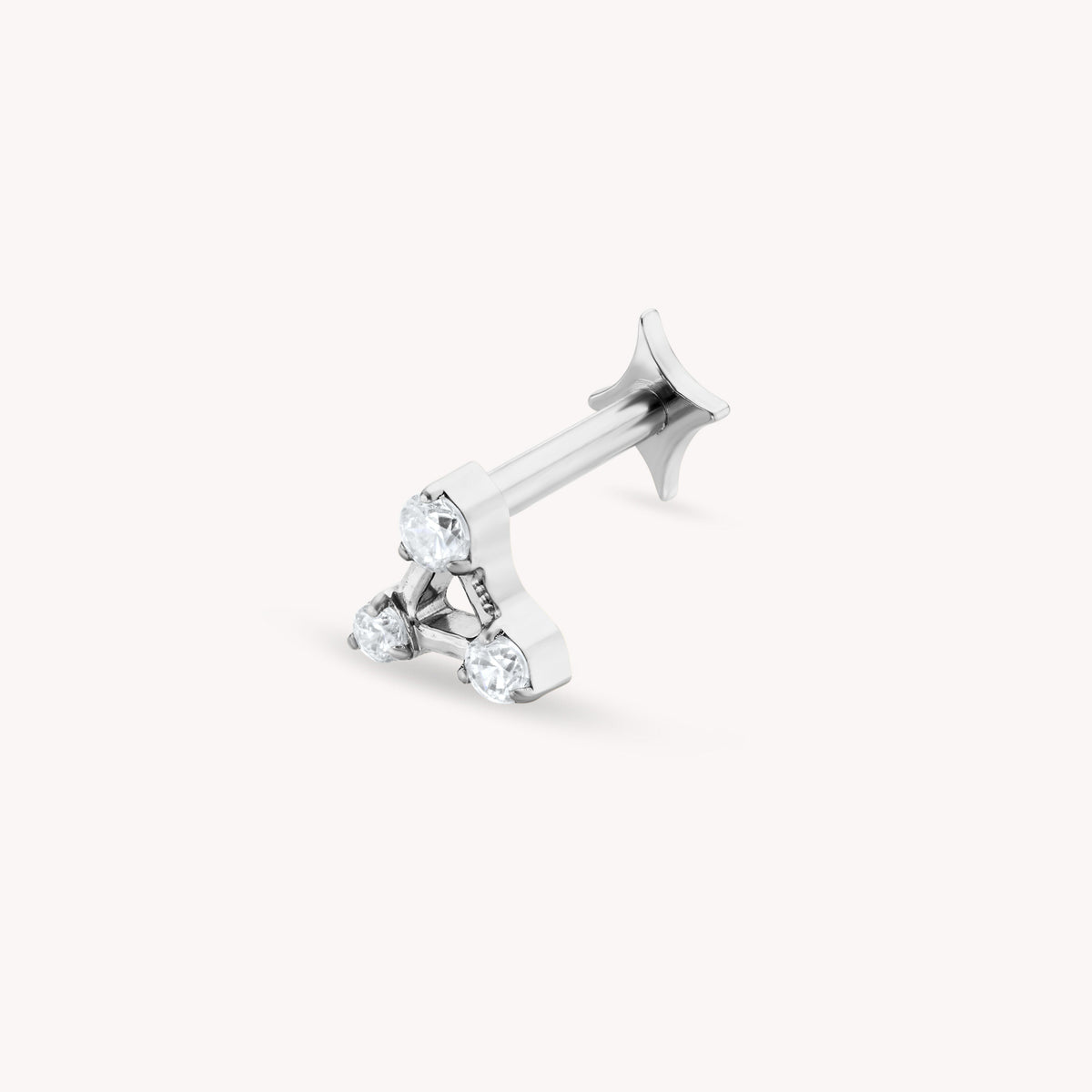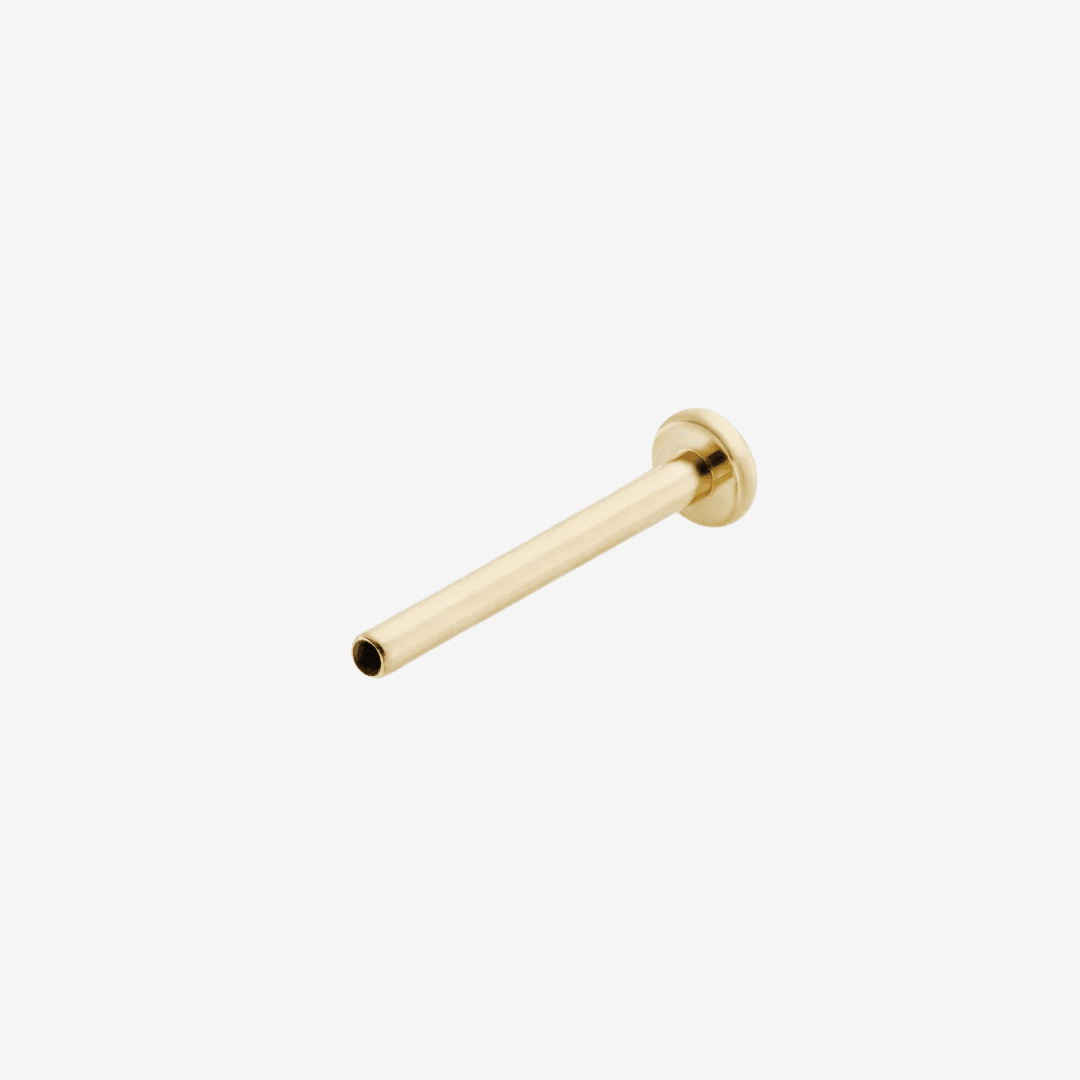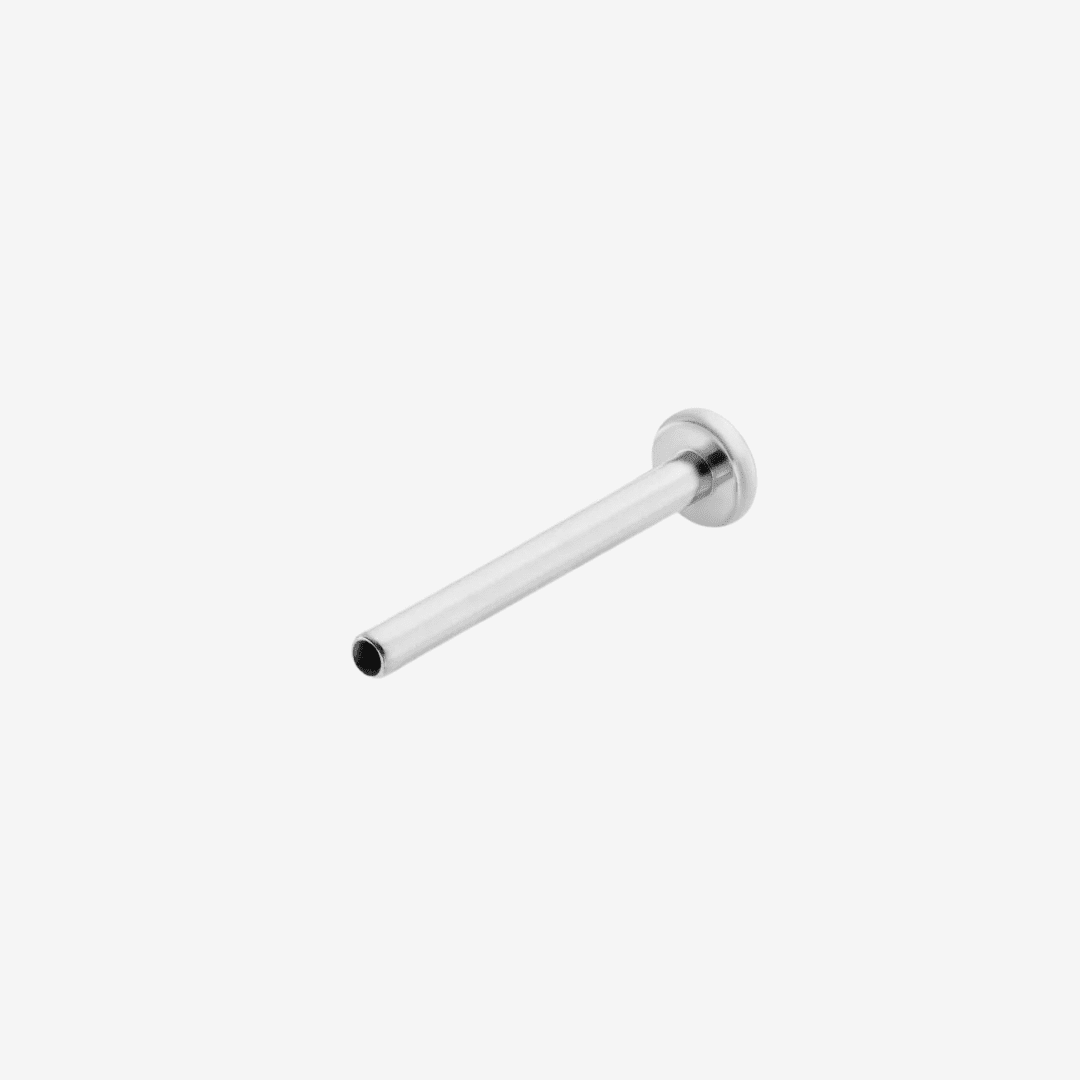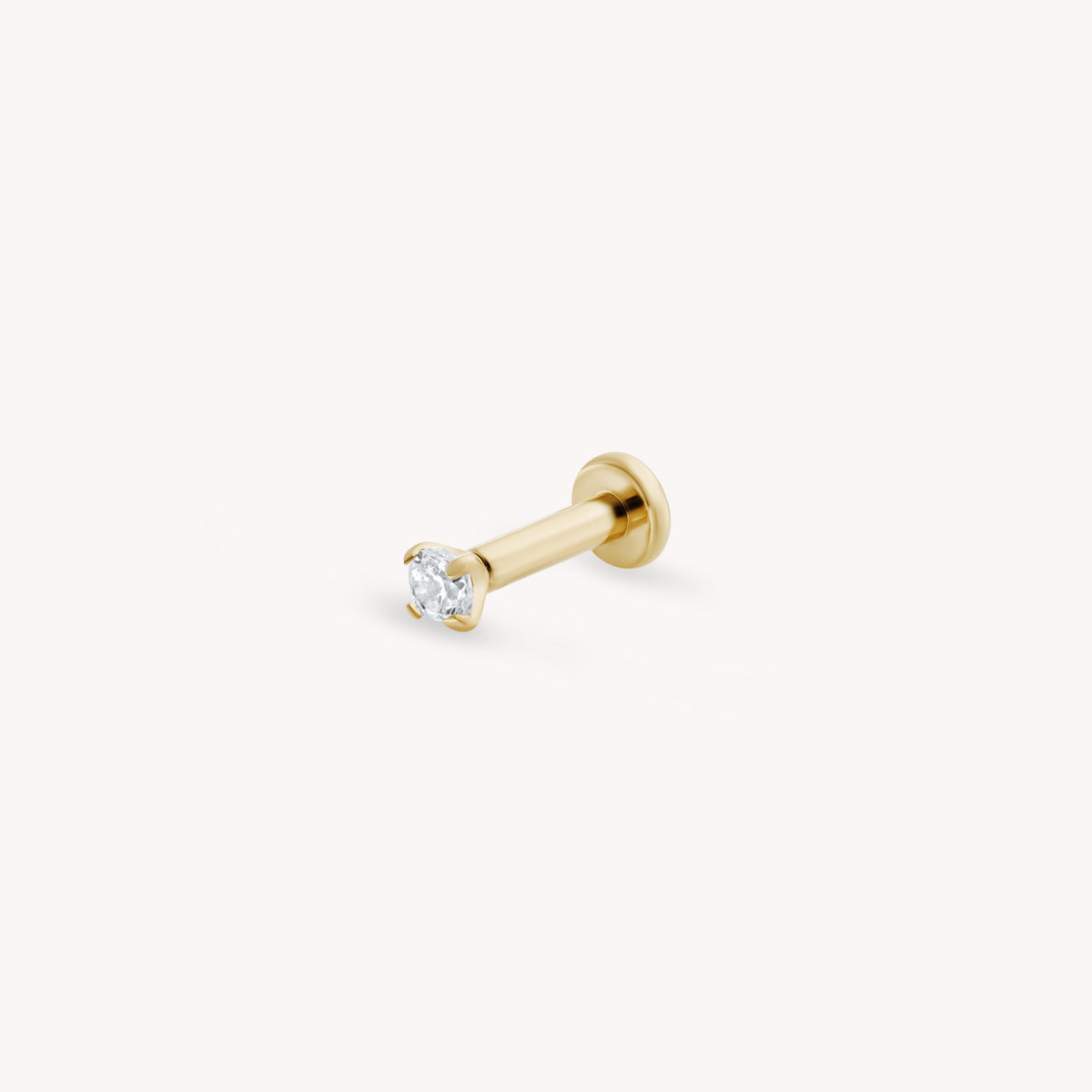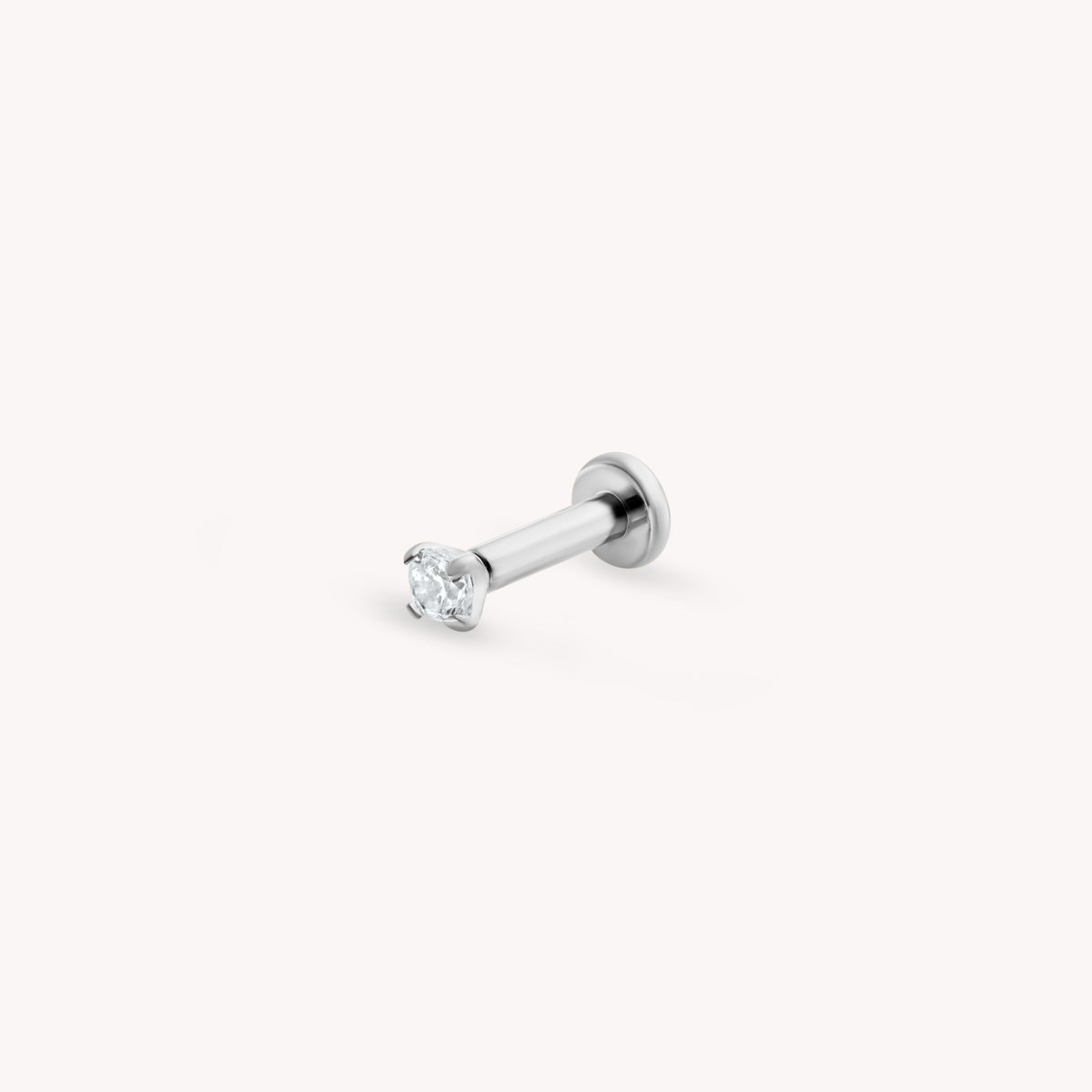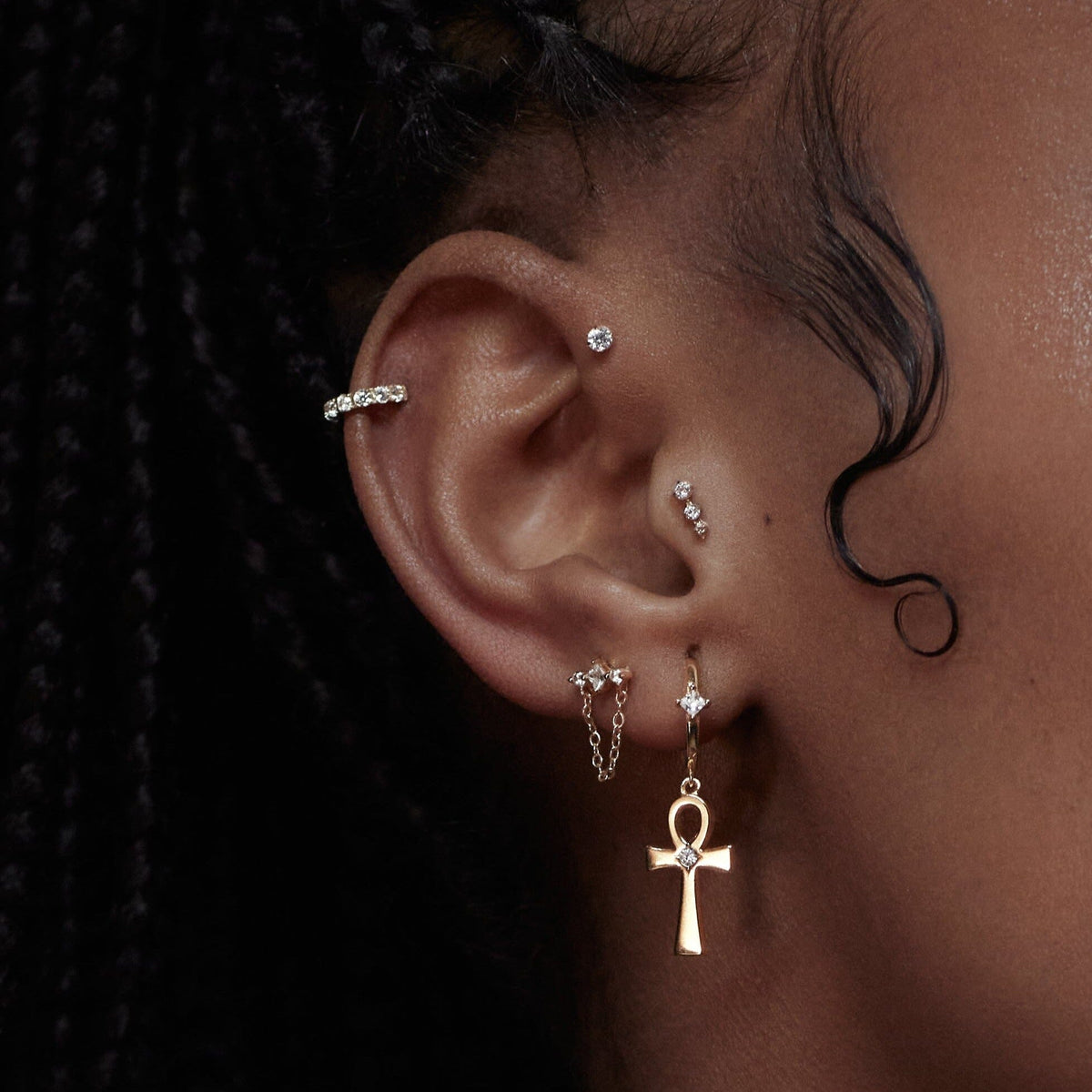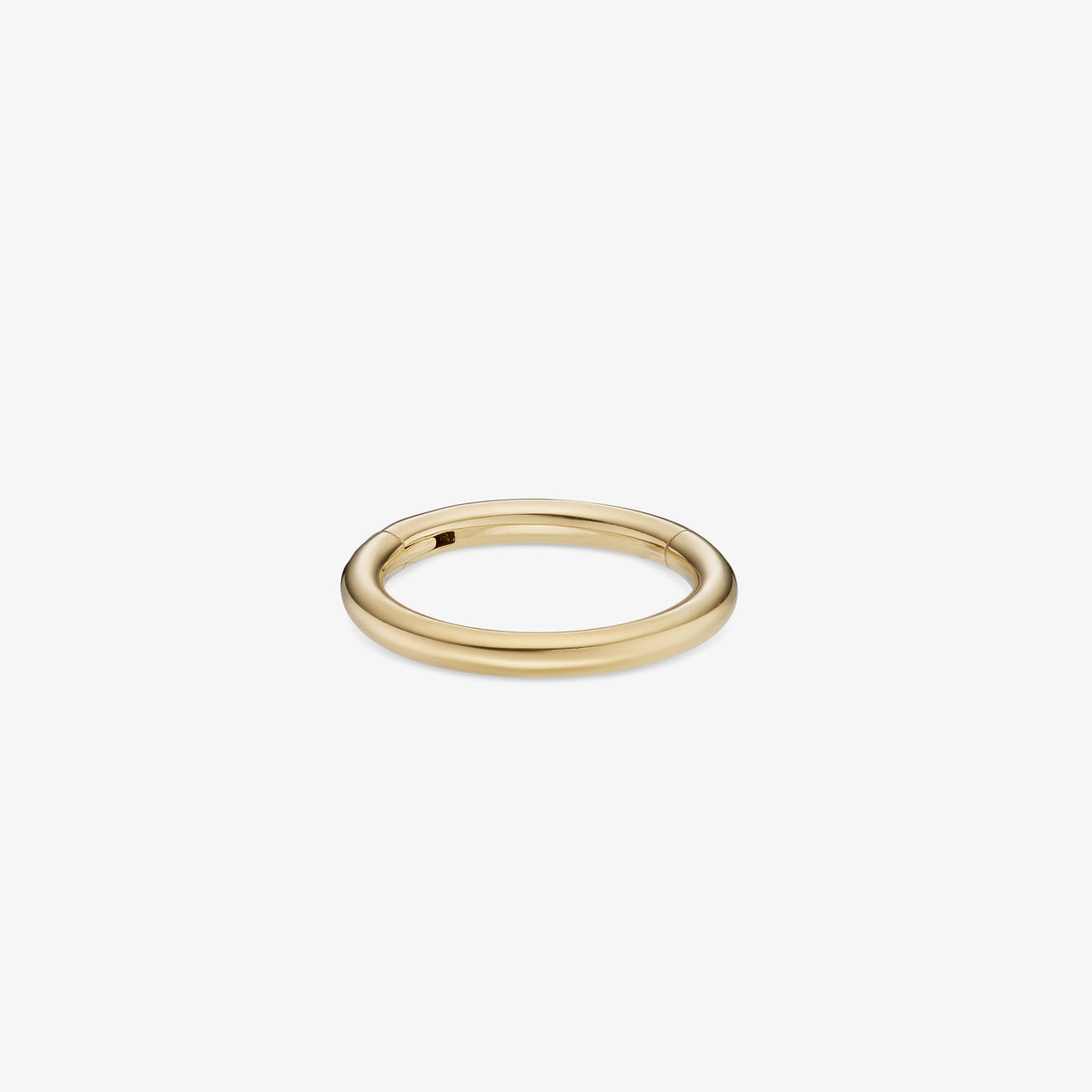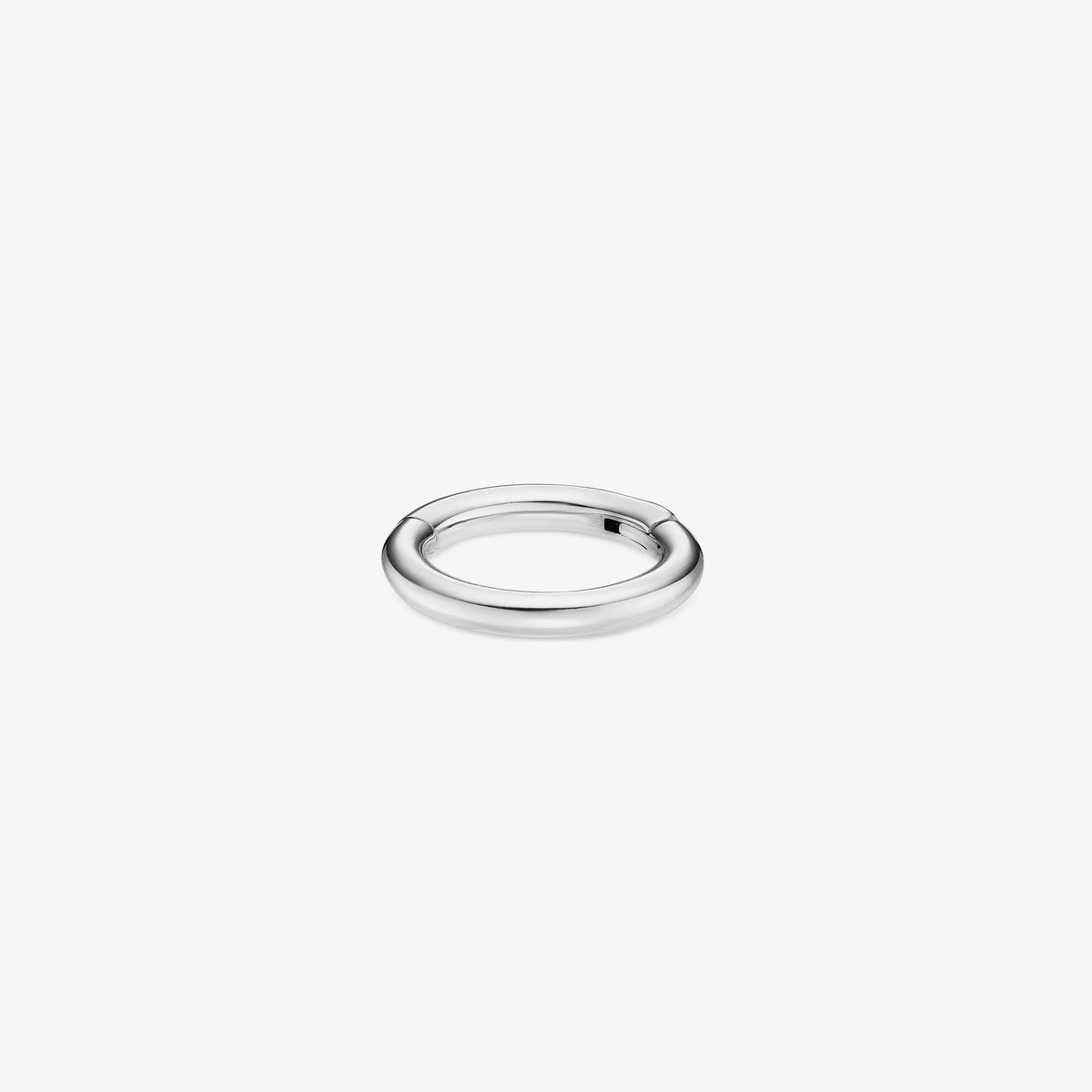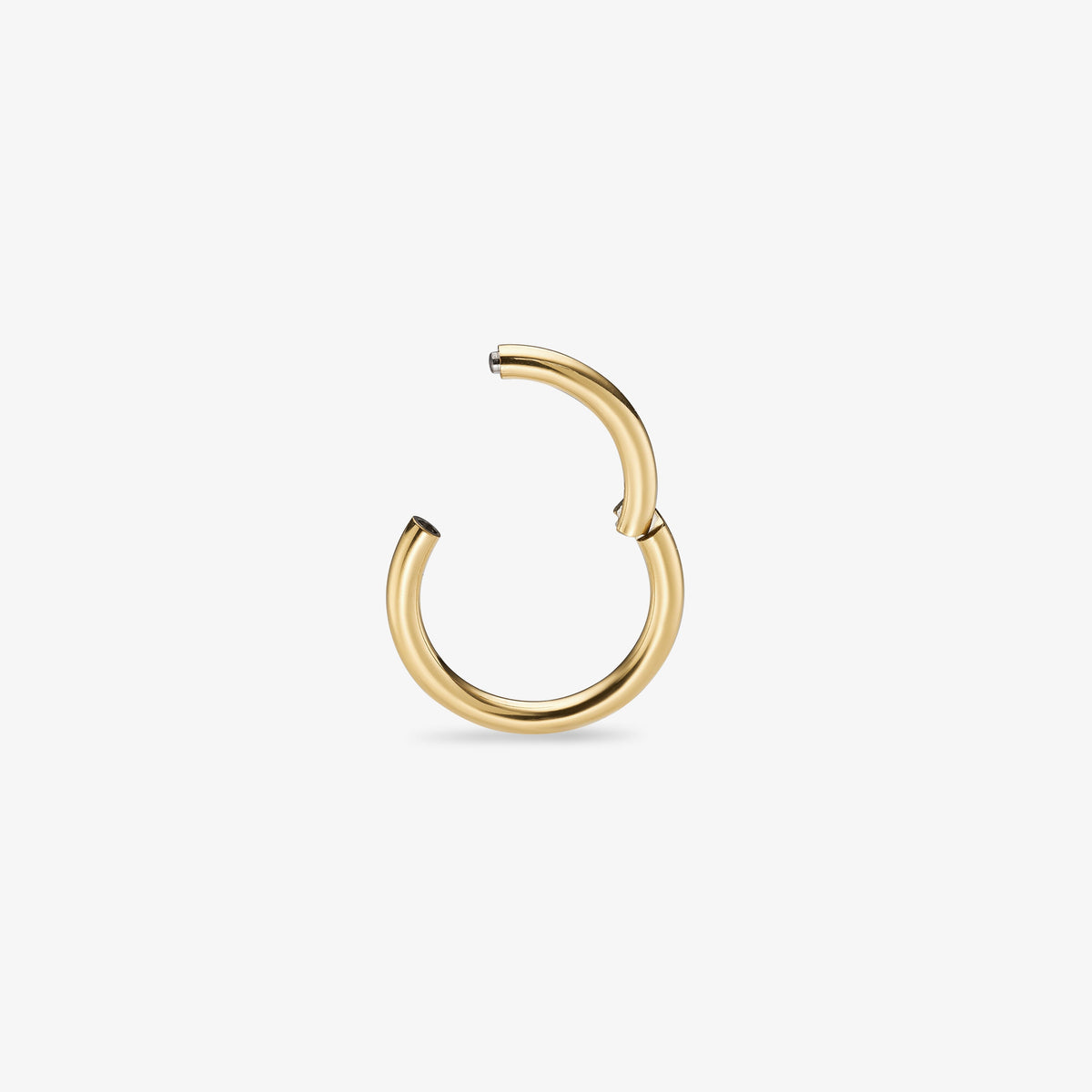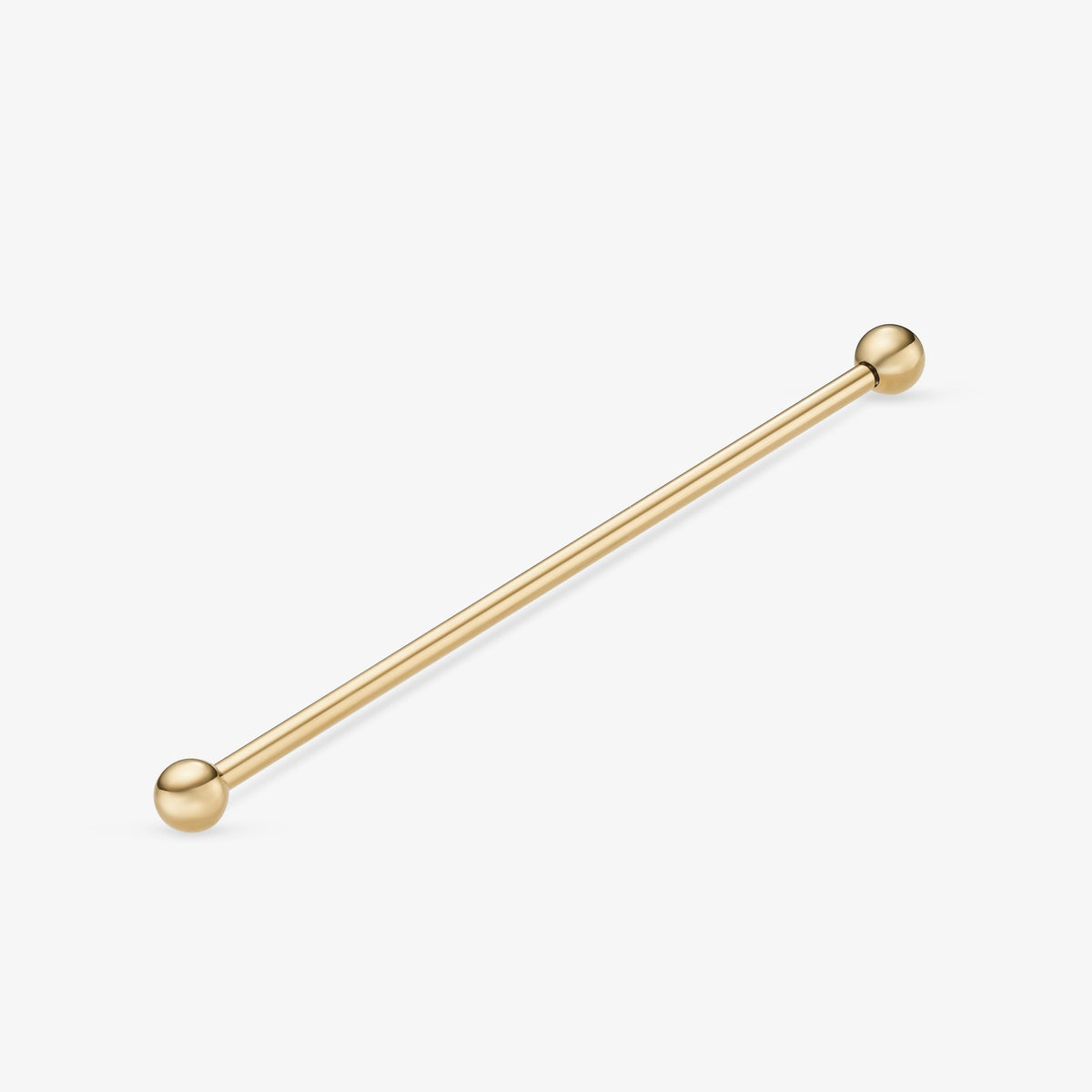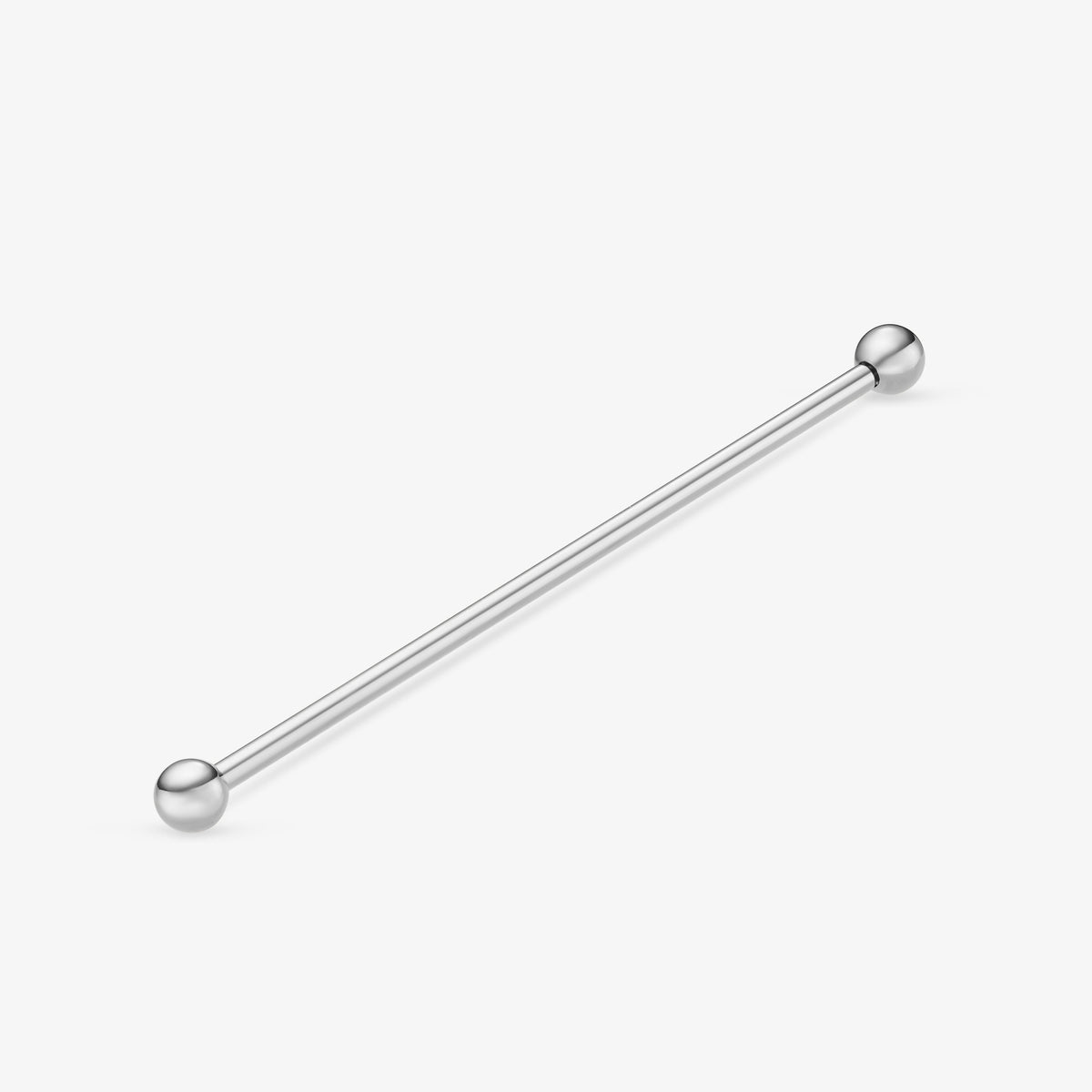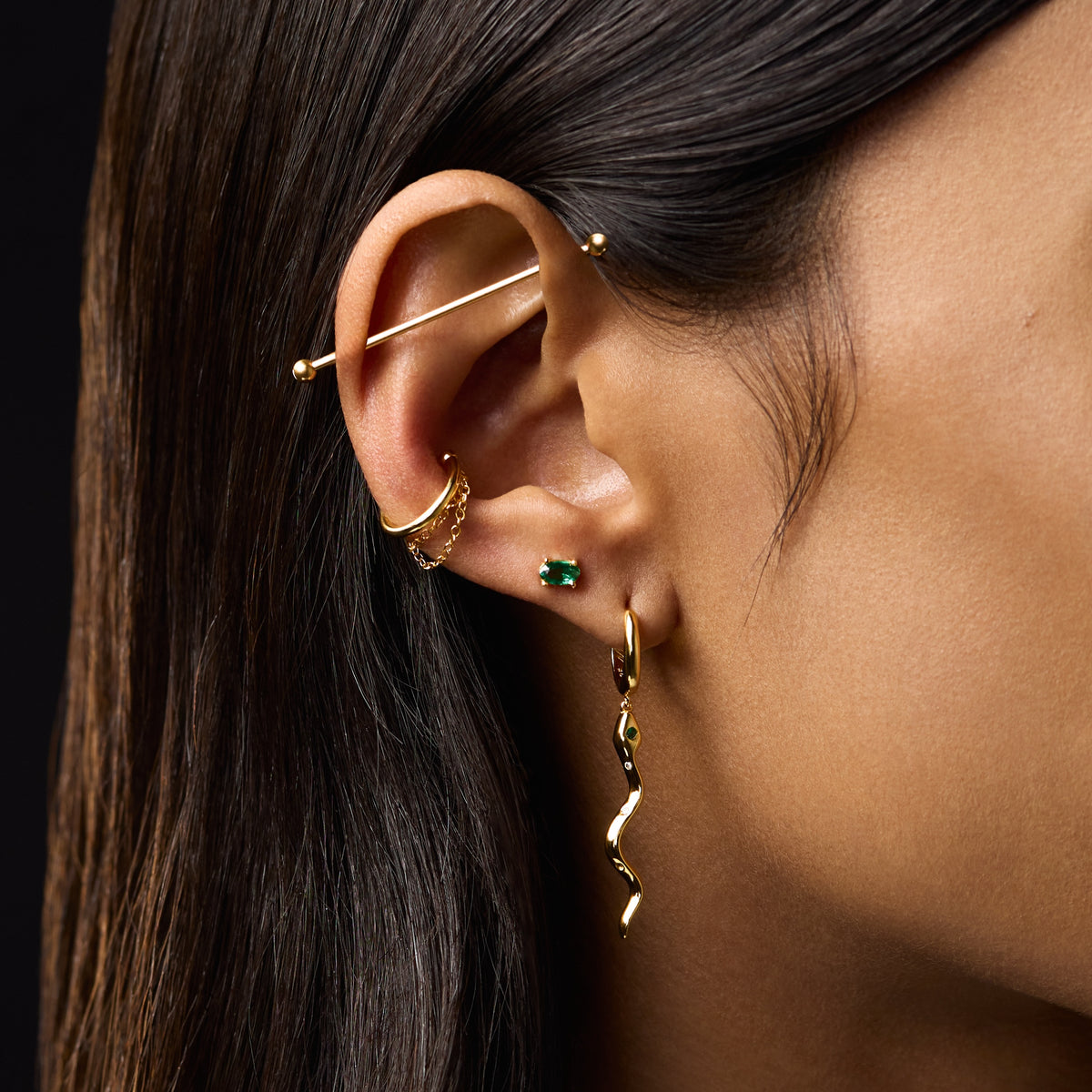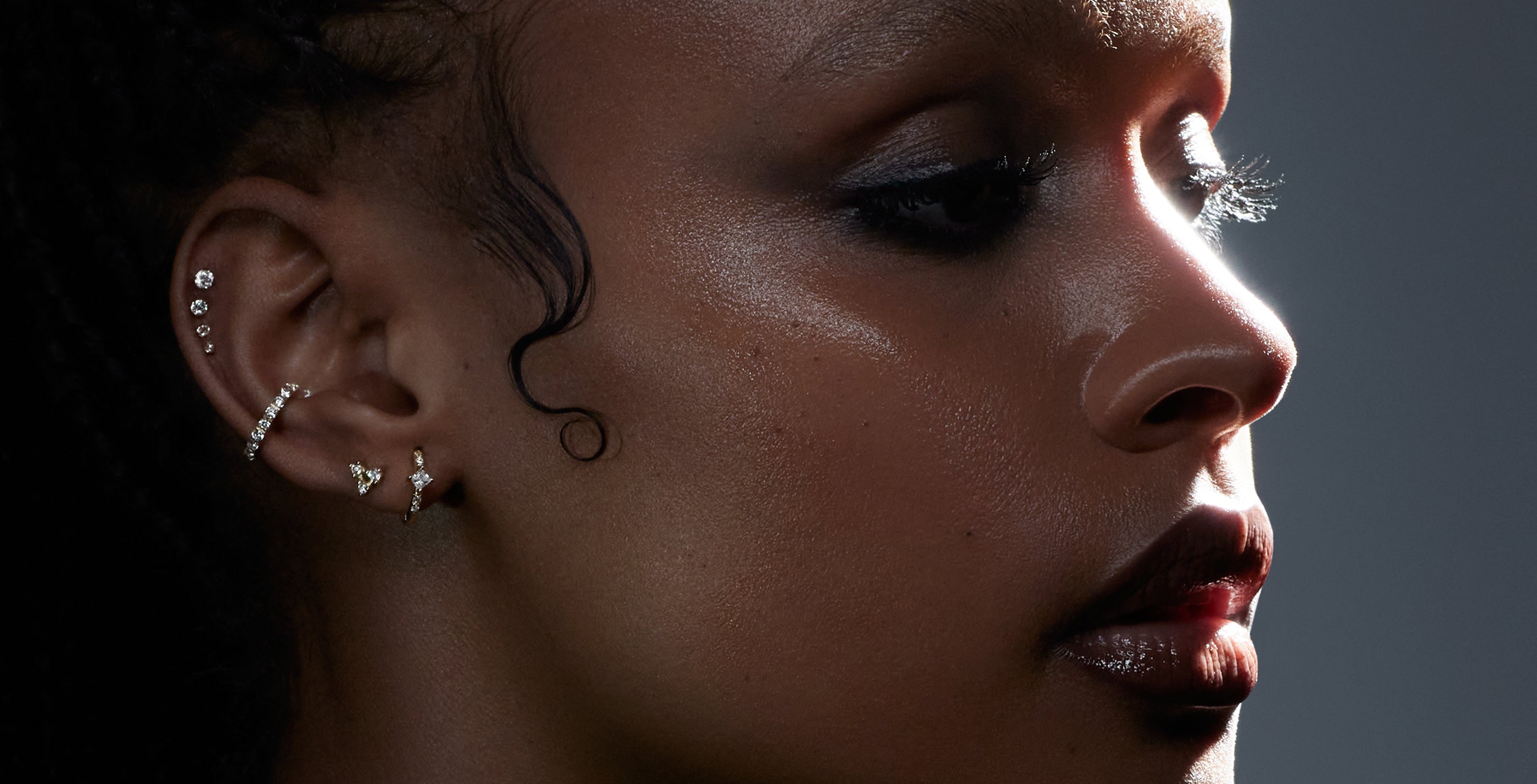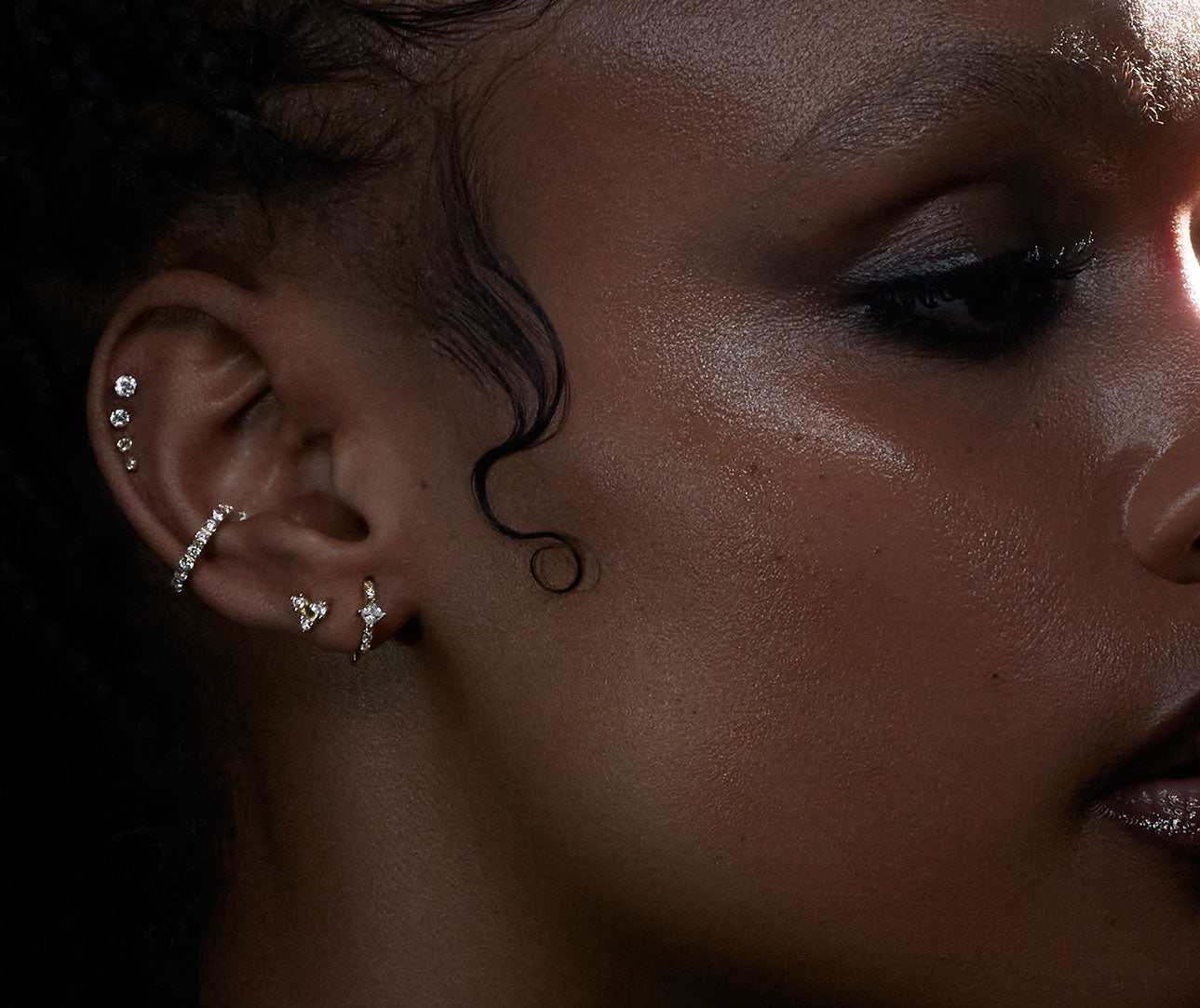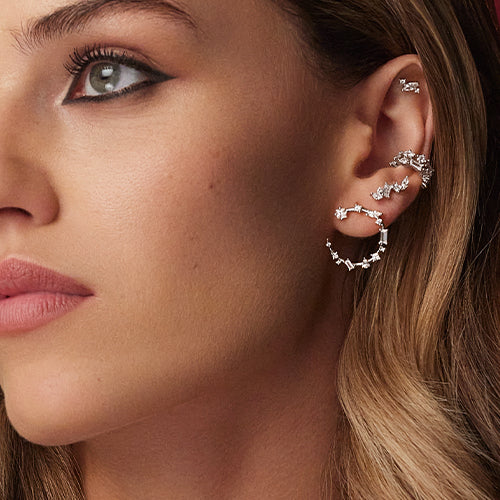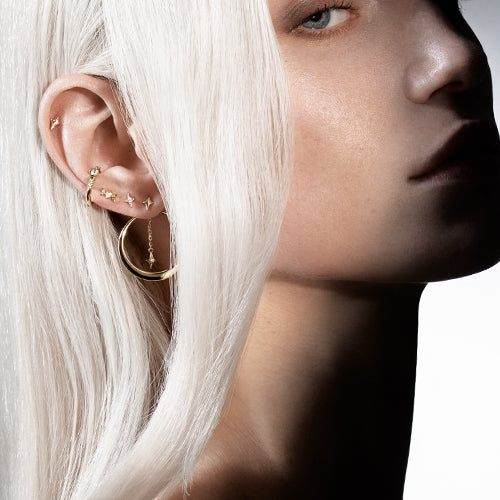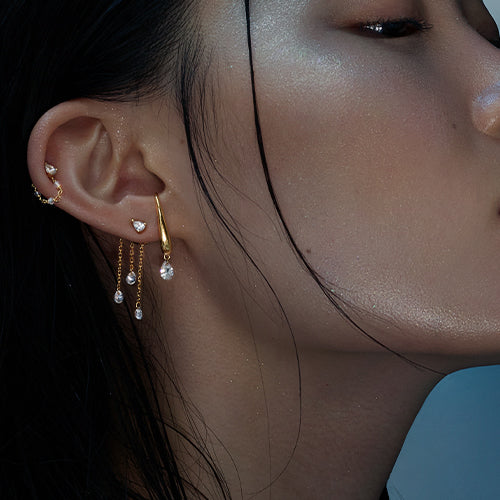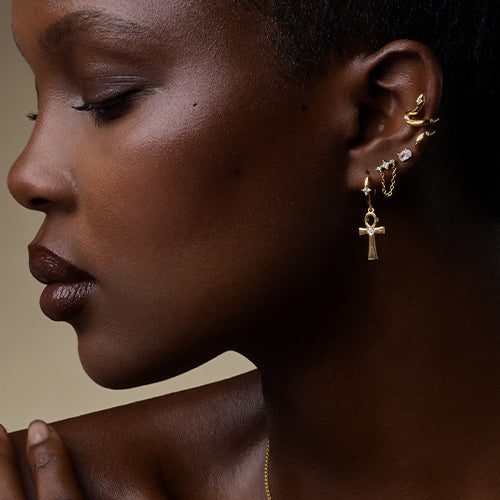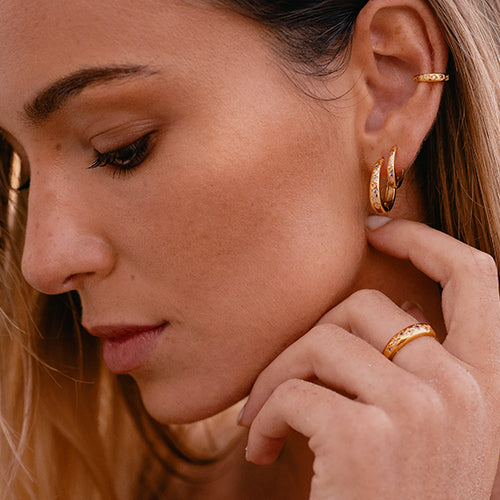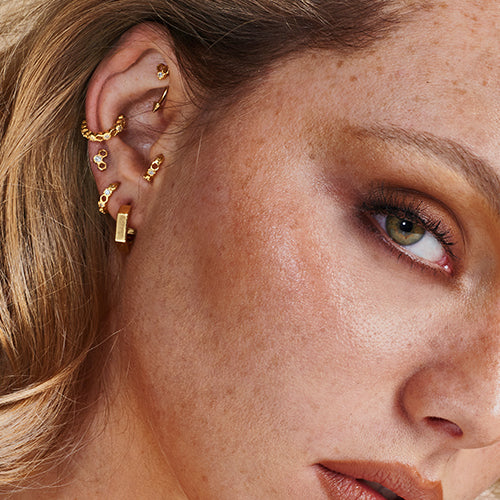12 new jewelry
Earfinity titanium range ©
Piercings reversible with a whole new form of closure innovative To be able to change style endlessly, and very (very) easily at home!
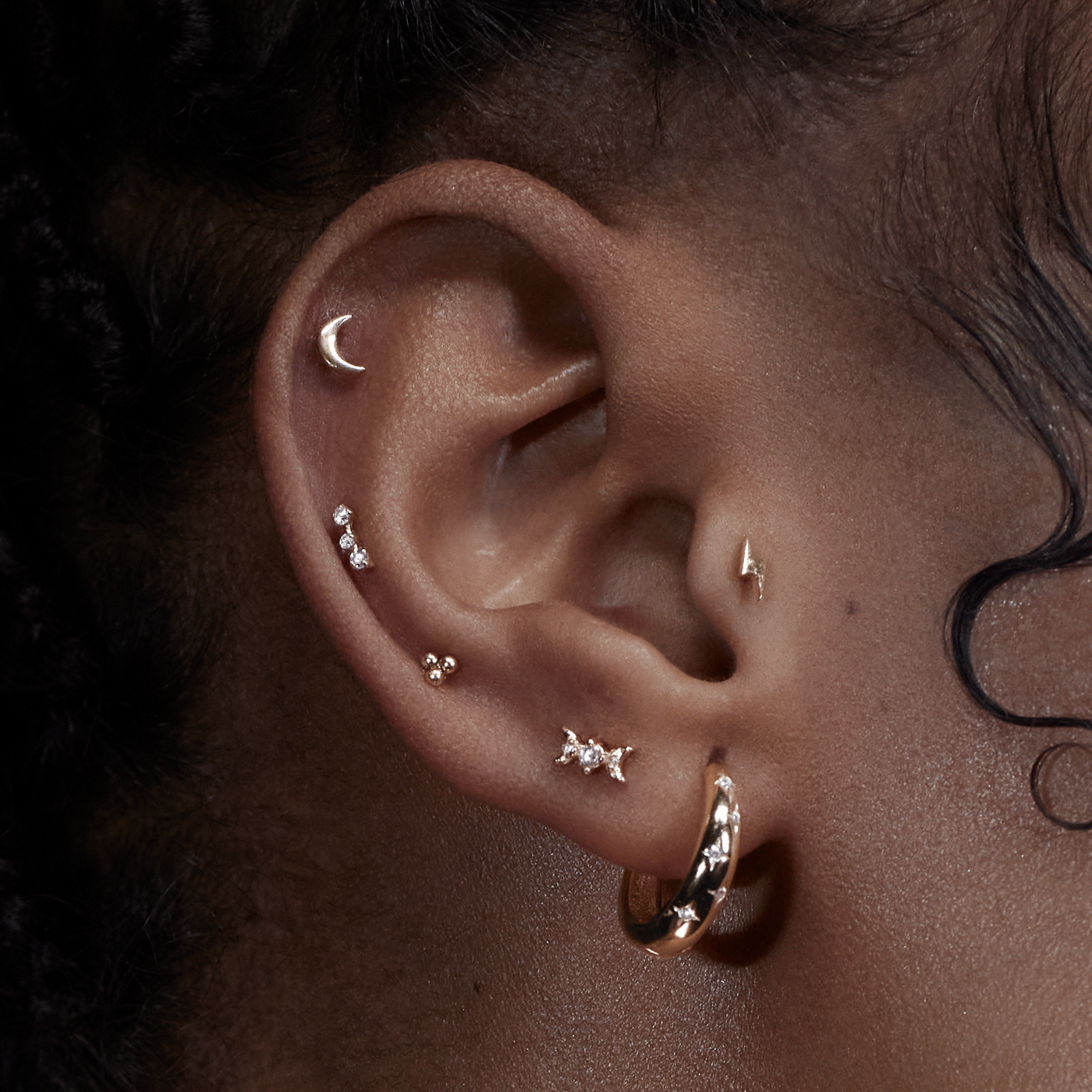
Earfinity ©
A simplified closure system
You will no longer need to screw your jewelry: you just have to gently slide the jewel in the rod, and to press so that it remains blocked, eliminating the need to screw small delicate pieces. This ease of use allows you to change all your piercings alone at home without the slightest difficulty!
The piercing is still made up of two parts. You will find the jewelry with a fine curved stem, and the hollow bar to insert the jewelry inside. It is thanks to the curved upper that your jewel will come to settle inside the walls of the bar and create a pressure to maintain the jewel. The curvature of the stem is therefore essential to the proper functioning of the mechanism.
Why the titanium range?
The titanium is biocompatible, that is to say that it is one of the materials best tolerated by the body and that it is even suitable for the most sensitive skin!
We advise you to adopt the titanium range for the duration of the healing of your piercing. It can also be useful in case of inflammation, outgrowth, cheloid, or allergic reaction to another material.
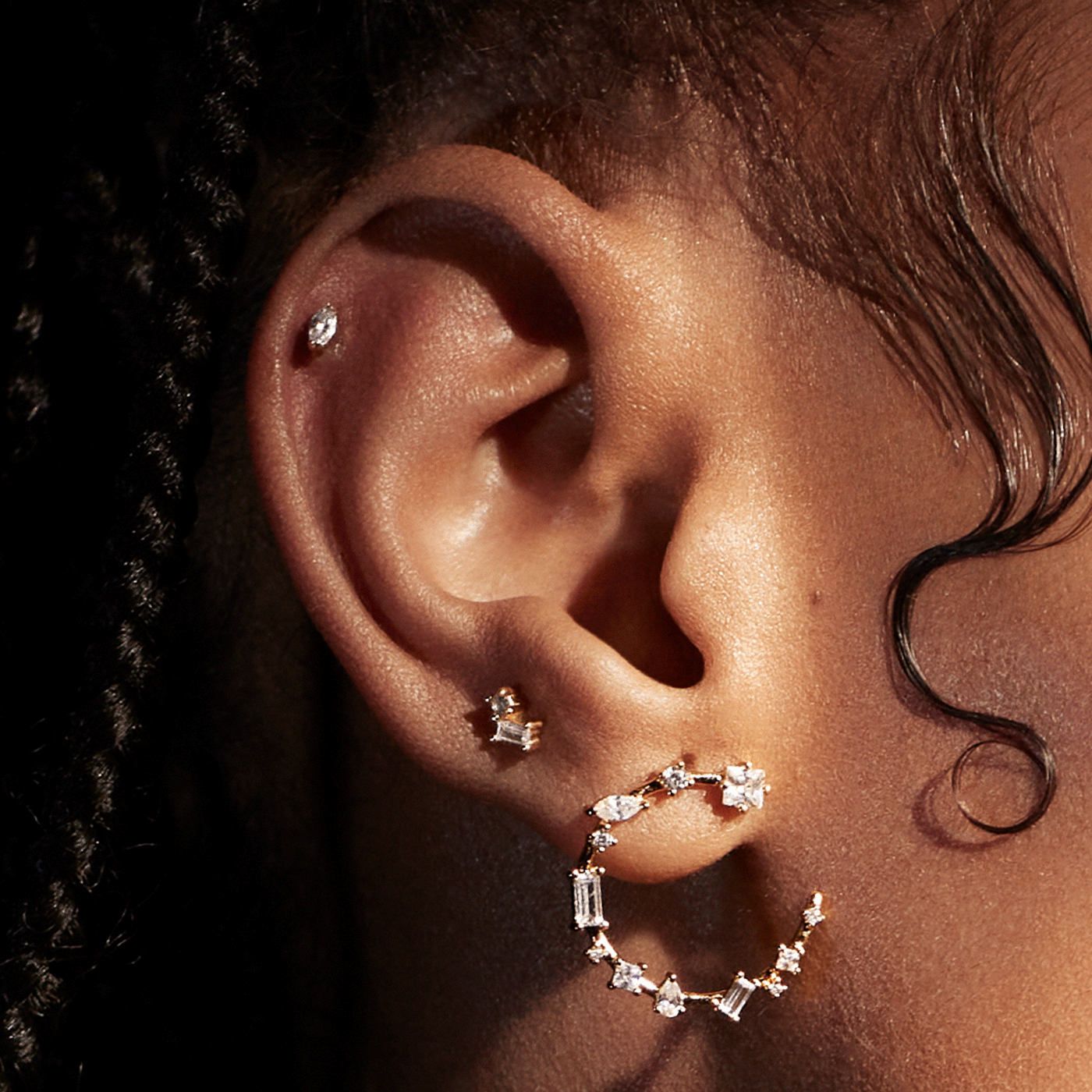
What size of piercing to choose?
We have made the choice to simplify our piercing sizes and sell our jewelry in 7mm length and 1.2mm in diameter. They are suitable for first installation piercings and all healed piercings.
Regarding your piercings which have complications during the healing phase, we have planned for you bars in 10mm in length On sale per unit. These are compatible with all jewelry in the Earfinity © titanium range.

The word of the designer
Behind Earfinity ©
This is the story of my meeting with Maïté, a professional drill since 2016.
After a professional thunderbolt and then friendly, we decided to combine our creativity and our expertise in the world of piercing. Our only goal: to develop a brand new range of innovative piercing combining elegance, practicality and quality.
It’s after One year of development That we are proud to present our new Earfinity range ©! It is a double innovation: reversible piercings 2-in-1 for an infinity of composition and a simplified closure system.
We are grateful to be able to share this adventure with you, and we can't wait to see where the trip will take us. Thank you for being part of this story with us!
- Adélie
Faq
Earfinity © perfectly embodies the innovative concept behind our nebulous titanium jewelry. In a word, we have captured the essence of a range on which we have been working for more than a year: reversible piercings, allowing infinity of compositions. An innovation that we are particularly proud of!
The term "biocompatible" means the ability of a material to be tolerated by the human body without triggering adverse reactions. In other words, a biocompatible material can be in permanent contact with skin tissues without causing irritation or allergic reactions.
Nothing could be simpler! Earfinity © piercings © have an innovative Threadless mechanism to position the jewelry and its curved upper in the piercing bar. The curved stem exerts pressure on the walls of the bar in order to create adhesion. To close your piercing, simply place the jewelry inside the bar, and a slight grinding will confirm that everything is properly closed.
It is essential to choose an "implantable" material when making a piercing, which means that it must be designed to be implanted in whole or in part in the human body, and that it is intended to stay there after the intervention.
These materials are 6 in number, there are gold (from 14k), niobium, glass, platinum, stainless steel (in a certain grade), and finally titanium.
Titanium is the one that obtains the most advantages compared to other implantable materials. It is the cheapest, the most solid, the most resistant, resists corrosion better, it is lighter and above all: it is biocompatible. This means that it remains inert in contact with the skin. It is therefore with a lot of points ahead that the titanium arrives in first position of the materials to choose for a piercing.
Stainless steel and titanium are two materials often used for making jewelry, we explain the differences to you:
The chemical composition of these two materials is not the same: Stainless steel is mainly composed of iron, carbon and chrome, with possibly the addition of other elements such as nickel and molybdenum to improve its properties. THE titanium is a pure metal, generally combined with small percentages of other elements such as aluminum or vanadium.
Corrosion resistance : Stainless steel is renowned for its corrosion resistance, mainly thanks to its chrome content which forms a protective layer. However, in certain extremely corrosive environments, stainless steel can still corrode. The titanium is much more resistant even in extreme conditions.
Weight : Titanium is lighter than stainless steel. This does not really matter when making small jewelry because it is a tiny difference, but when it comes to medical equipment, the lightness of the equipment can be of great importance.
Resistance : Although stainless steel can be very resistant, titanium generally has better resistance it can offer resistance levels comparable or higher than those of stainless steel while being lighter. In conclusion, these two materials are really perfect materials for making jewelry with an advantage for titanium which is the purity of its composition and therefore a zero risk of allergic reaction or irritation of the skin.
THE titanium is the recommended material in the event of sensitive skin and in the event of allergic reactions frequent to earrings. It is also recommended throughout the healing period in order to maximize the chances of healing optimally without complications.
The titanium offers many advantages in terms of biocompatibility, it is hypoallergenic, very resistant to corrosion and can be carried continuously throughout the duration of healing, and even after.
Titanium jewelry is renowned for their resistance to corrosion and oxidation, which means that they tend to maintain their shiny appearance and their original color longer than many other metals. It is therefore very rare to see a jewel in titanium blackens.
No, it is impossible to use the old piercings on new labrets.
Indeed, the old jewelry of the titanium range are jewelry with internal screws (threaded) that must be screwed, while new jewelry are push-in mechanisms (threadless) that we slip into the bar.
We have changed the closing system; It is therefore for this reason that the old and the new range are not compatible and cannot be inserted.
Absolutely: this new range is completely compatible for a first piercing installation. Titanium ASTM-F136 is an implantable and biocompatible material; It is therefore perfectly suited. Make sure your pierceur sterilizes your jewelry before drilling.
Yes, the first installation jewel can be kept throughout the healing period and even after. Titanium is one of the materials best tolerated by the body, it is advisable to keep it after healing and there is therefore no obligation to change it.
There is not more risk of loss compared to a classic jewel. The curved upper is designed to create resistance in the piercing bar. In the event that you do not hear a slight creak when positioning your jewelry in the piercing bar, it is essential to manually bend the stem of your jewel using the tutorial present in the "curved rod" tab On the product page of each jewel.







